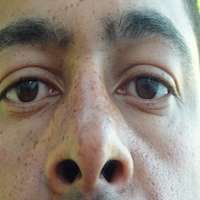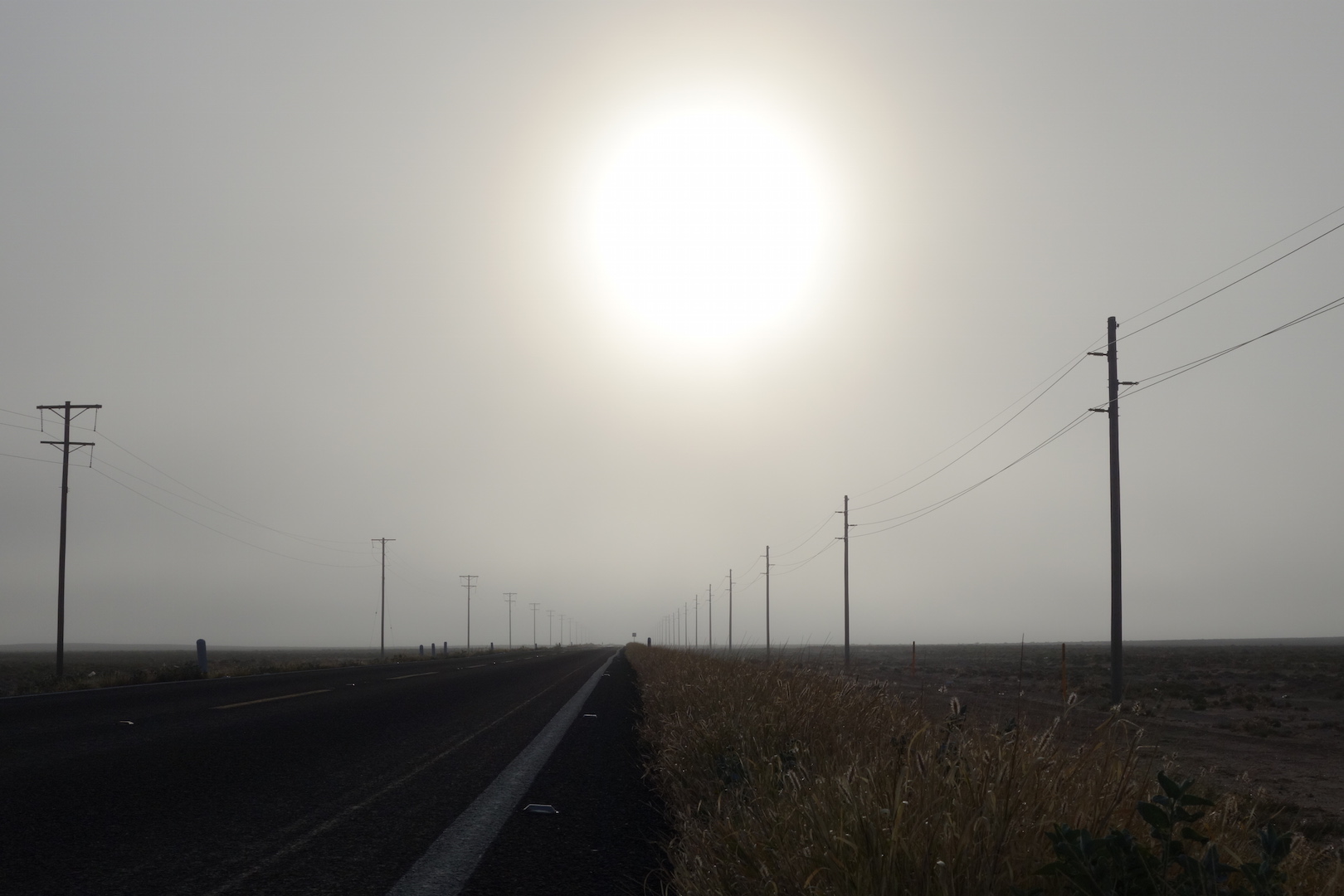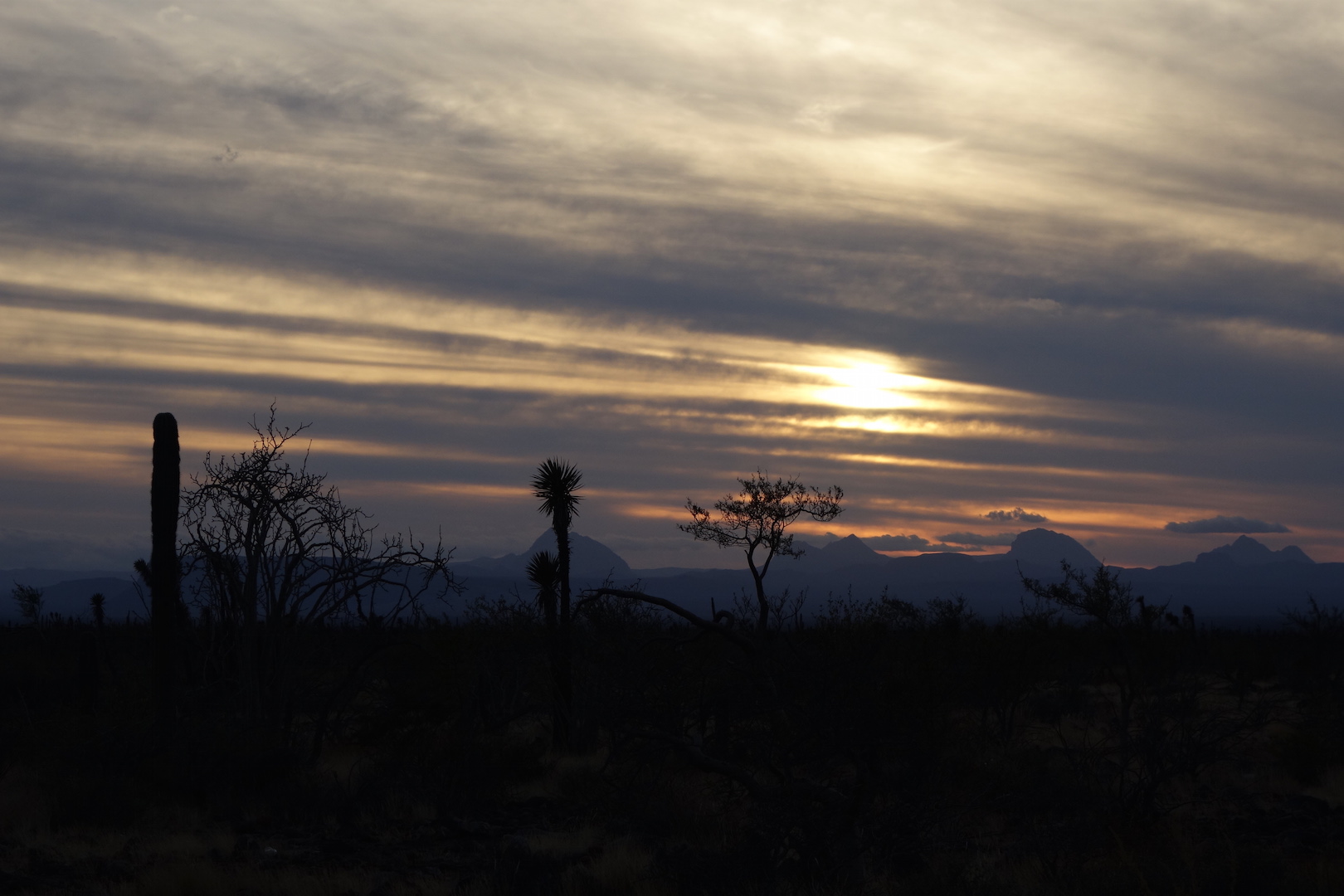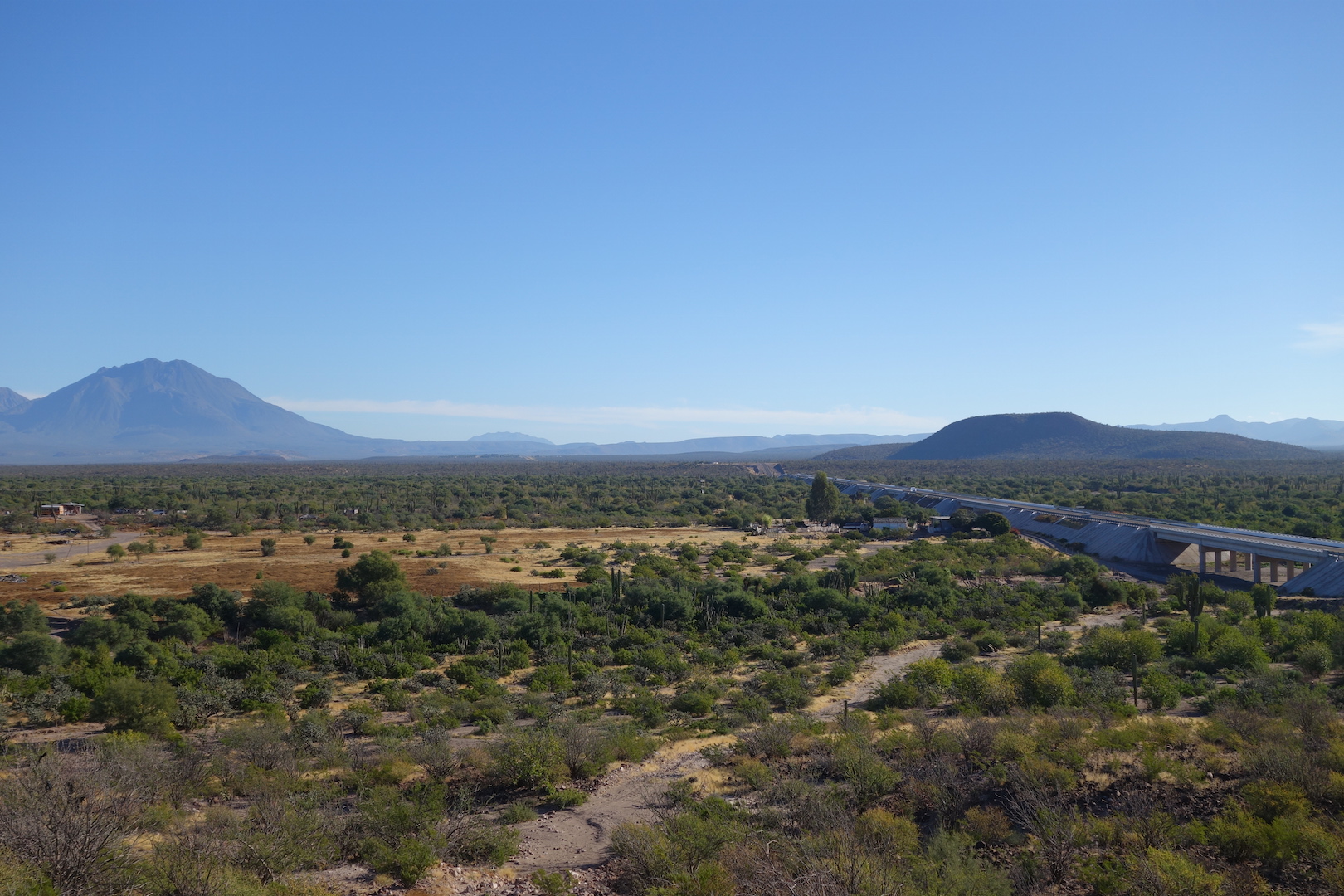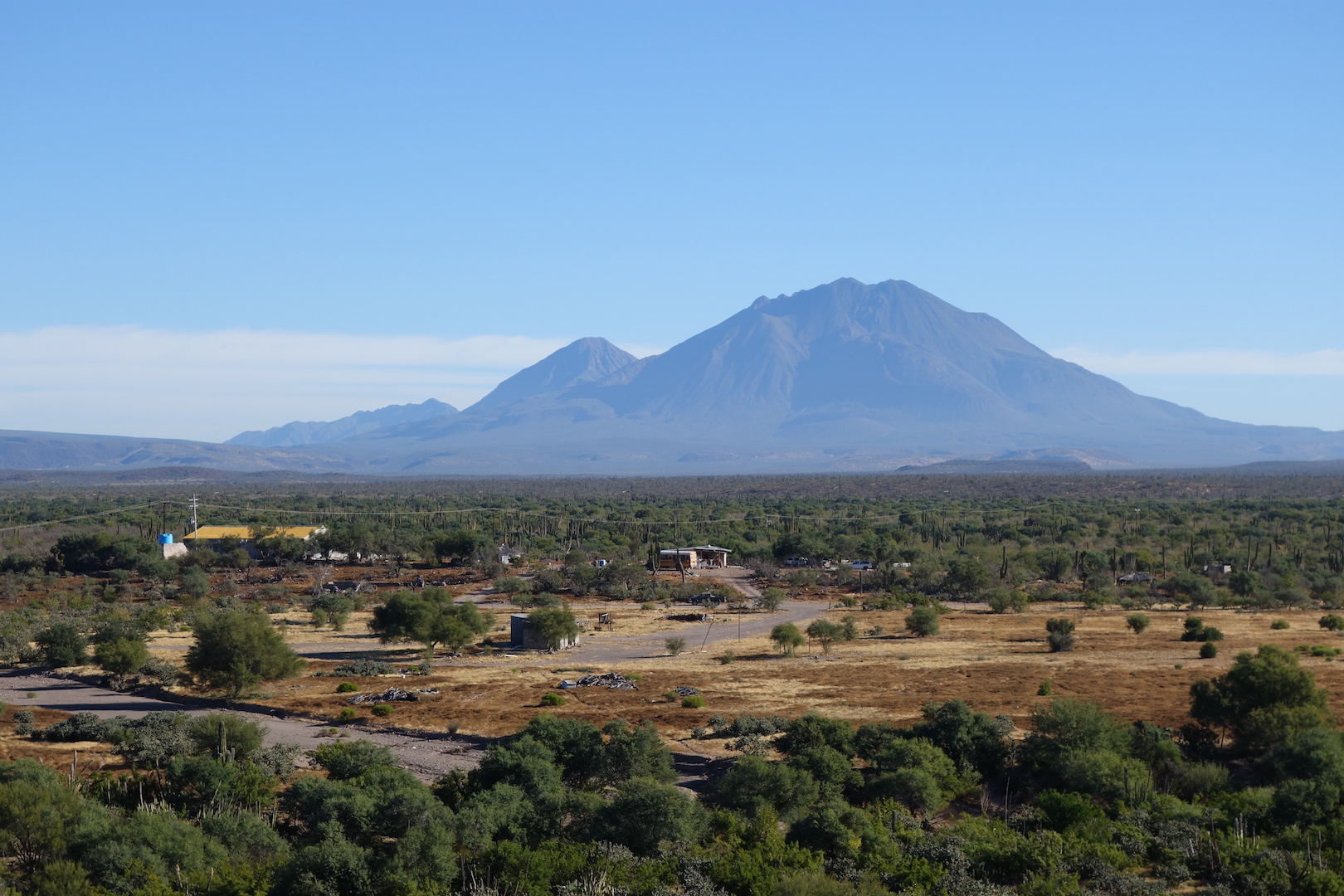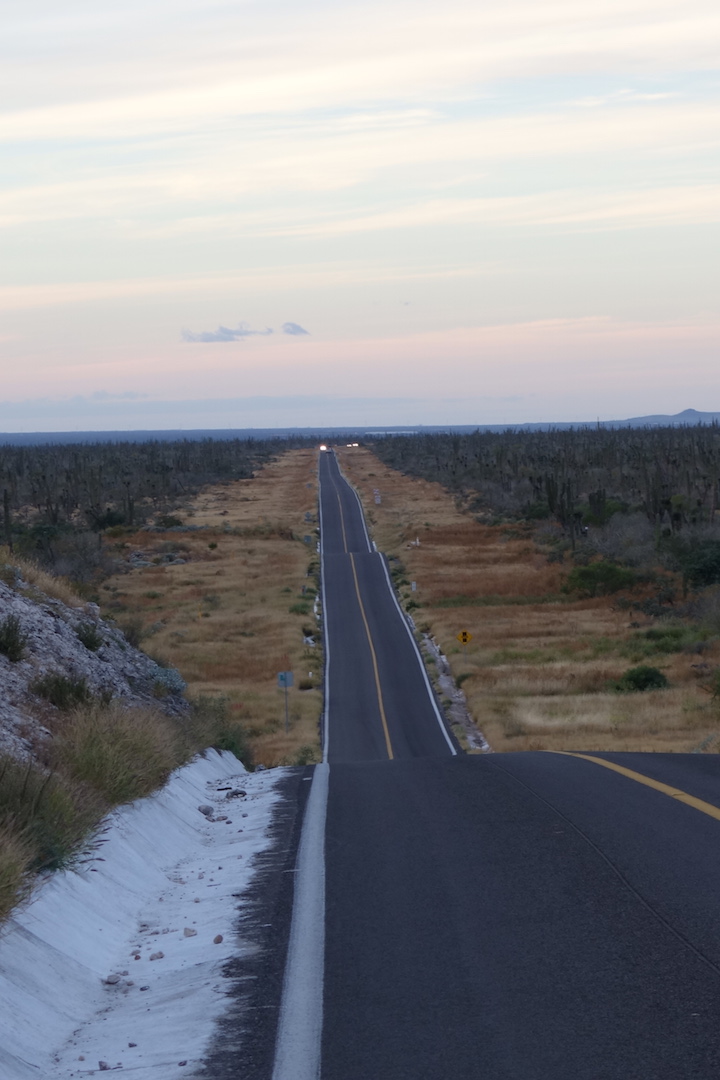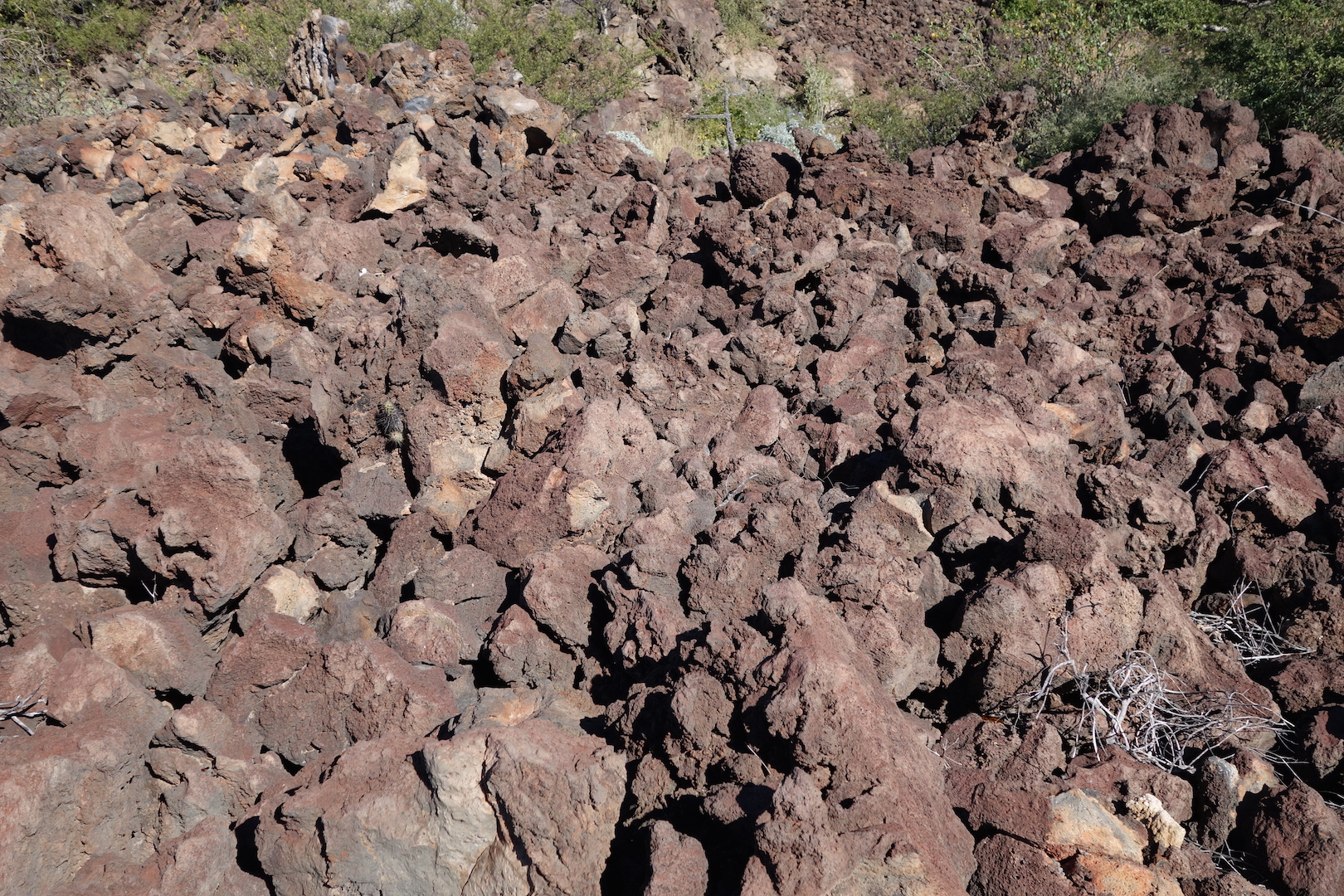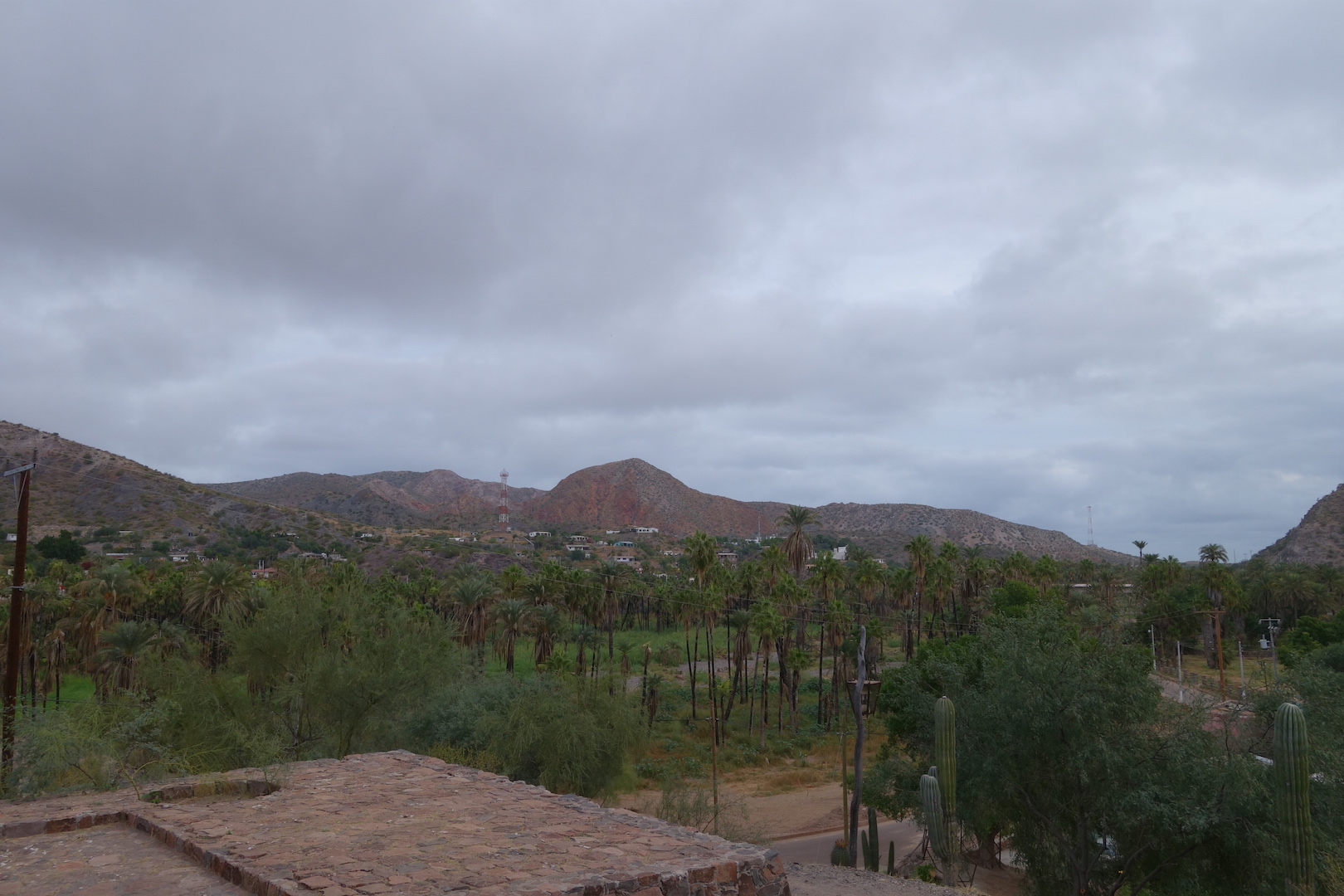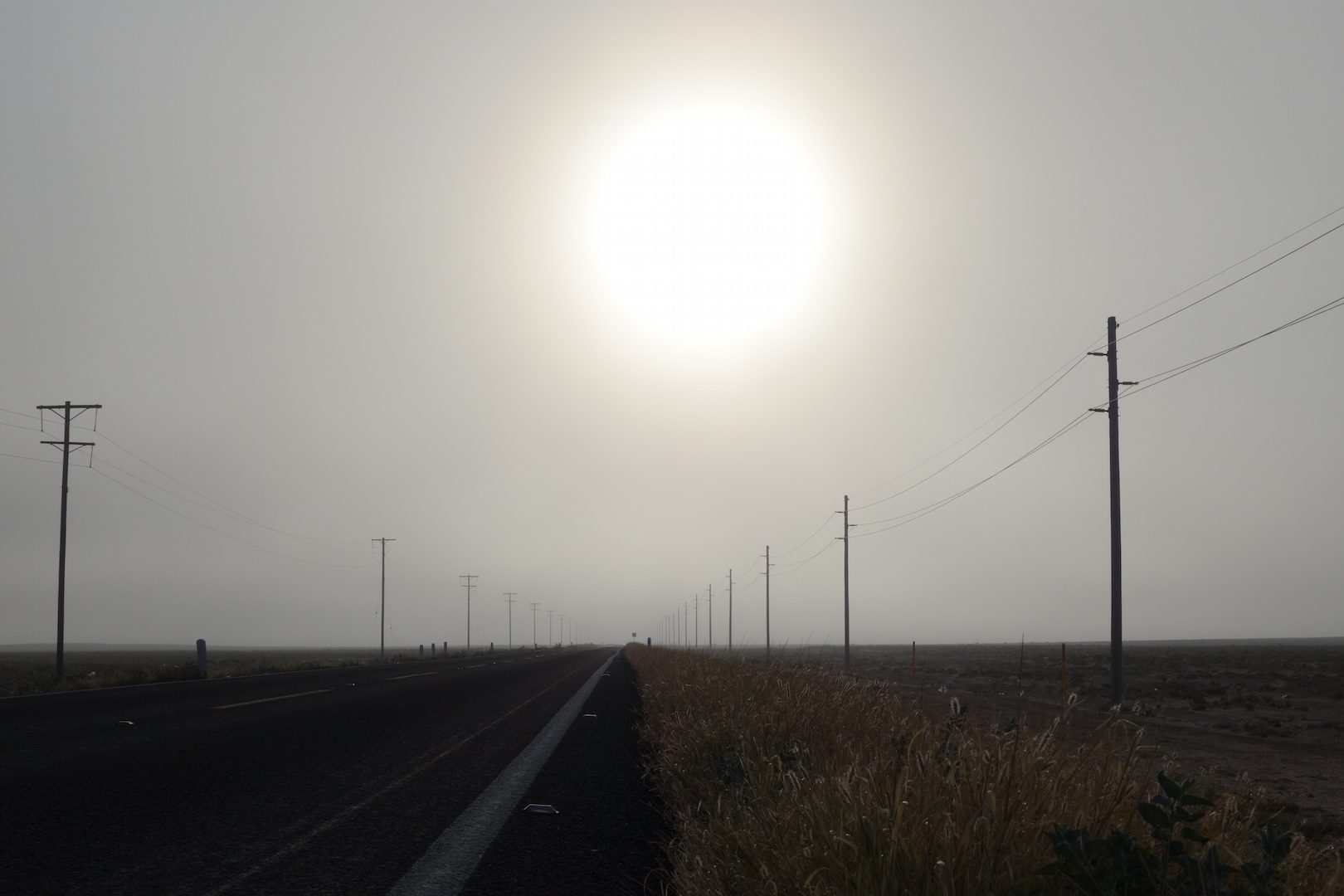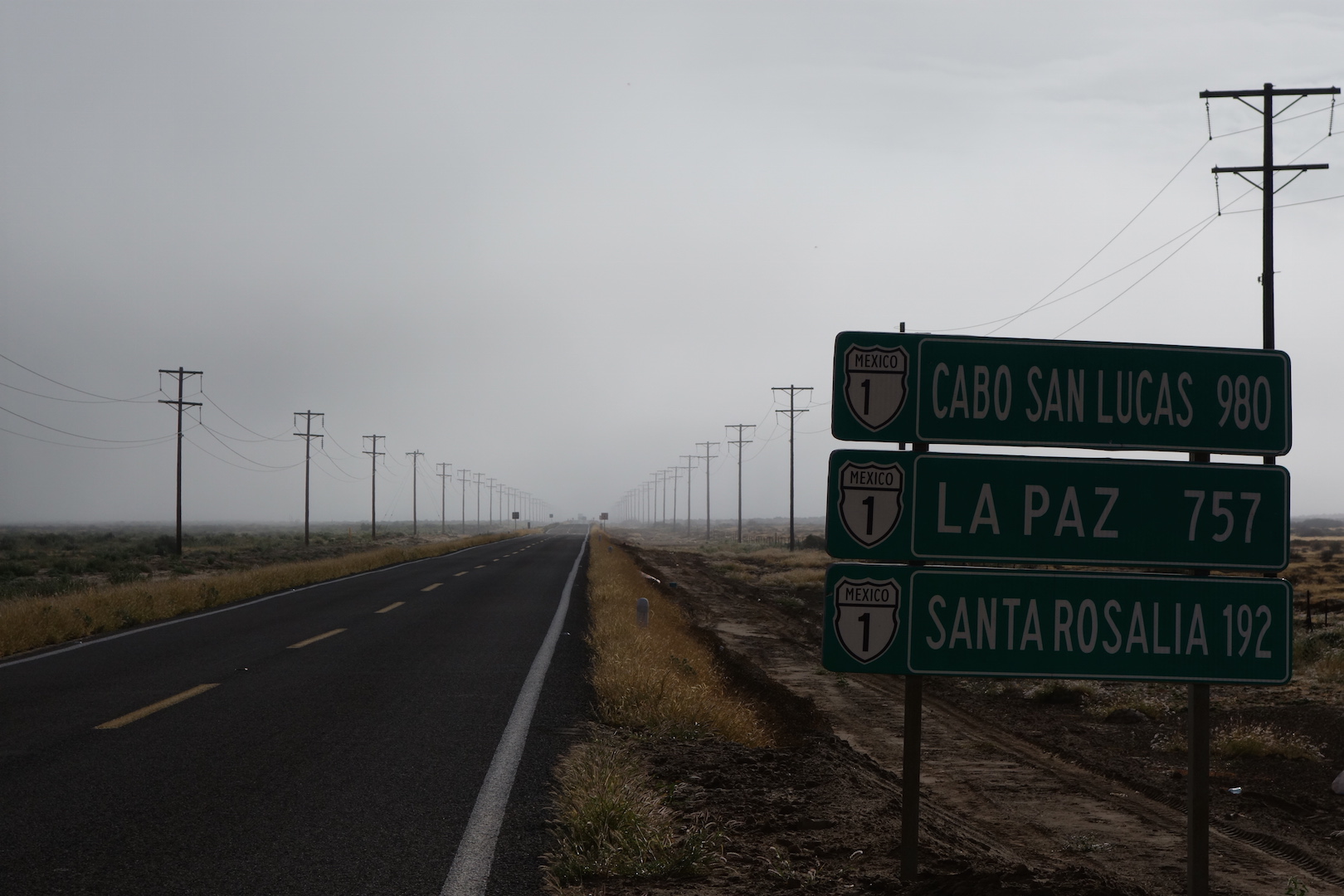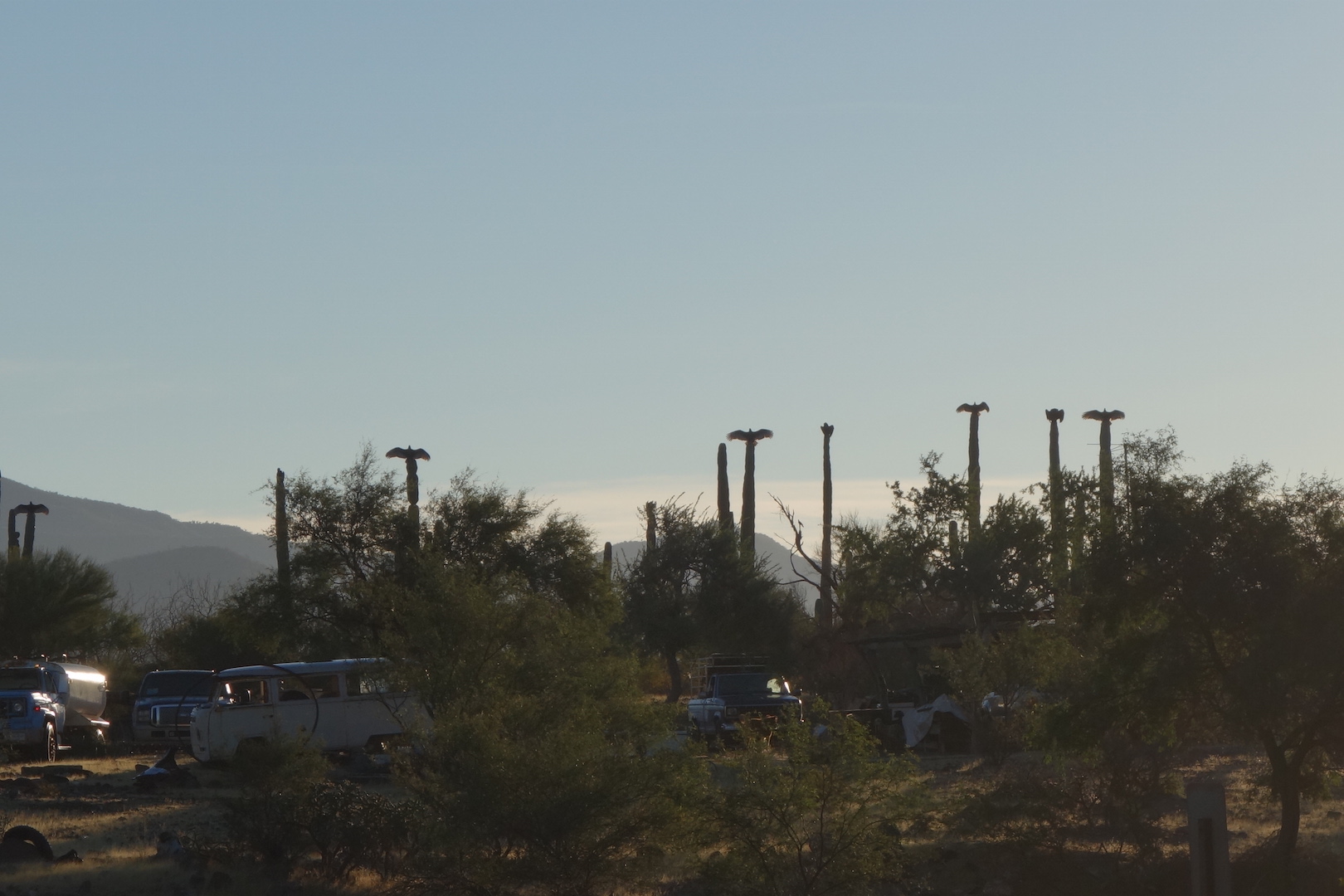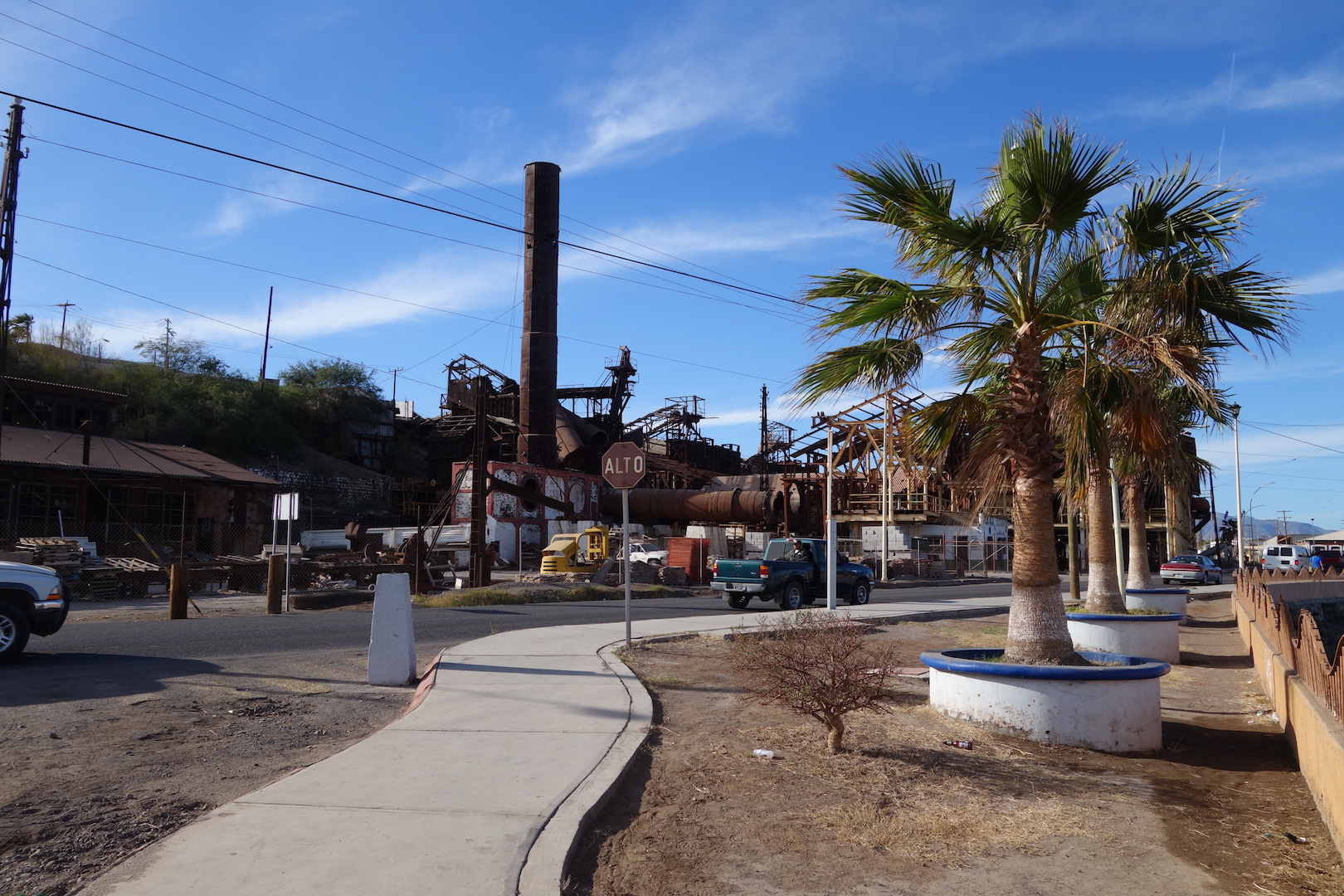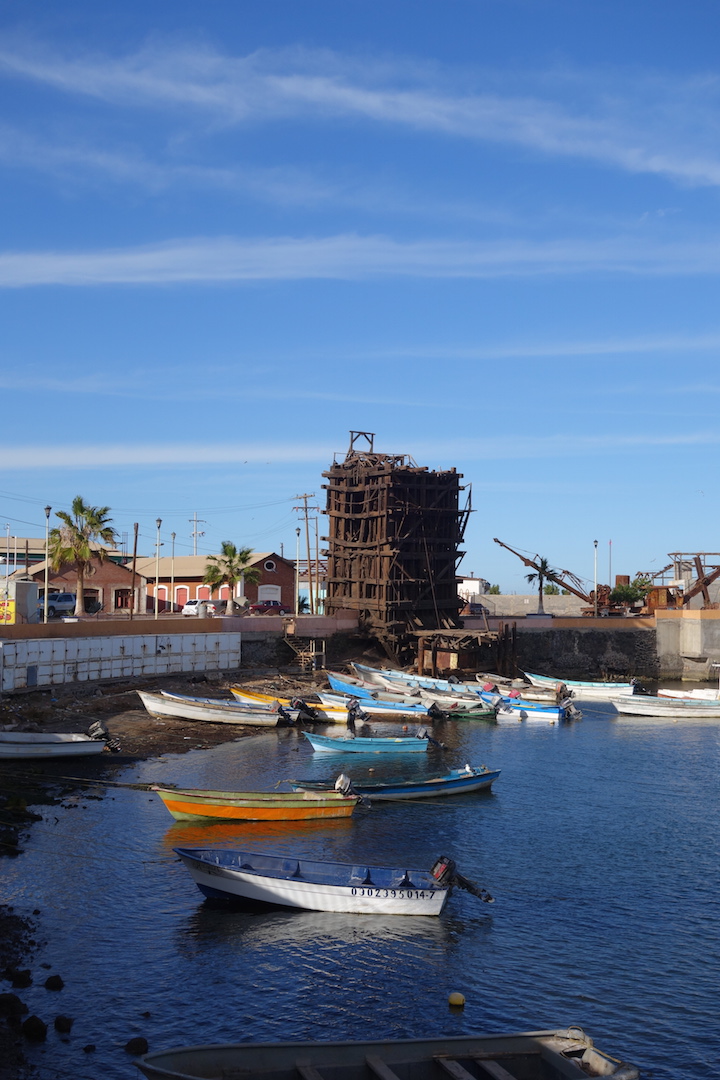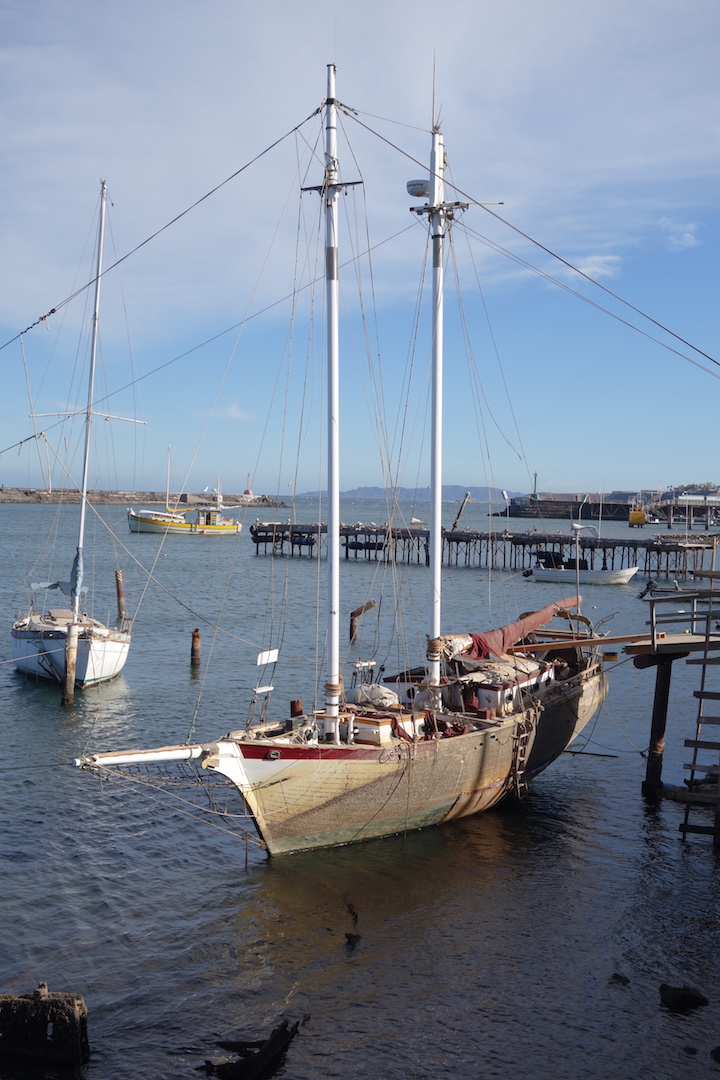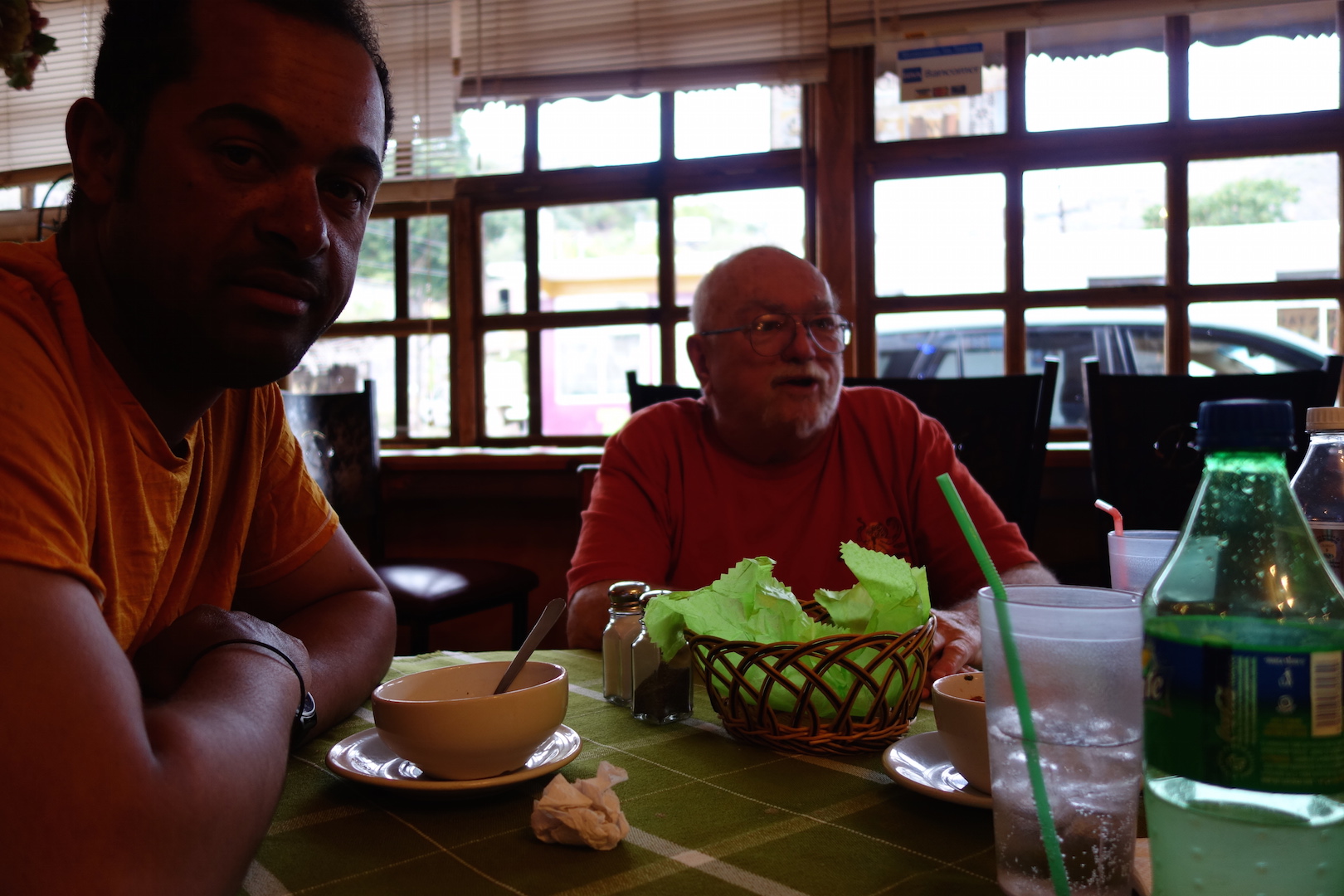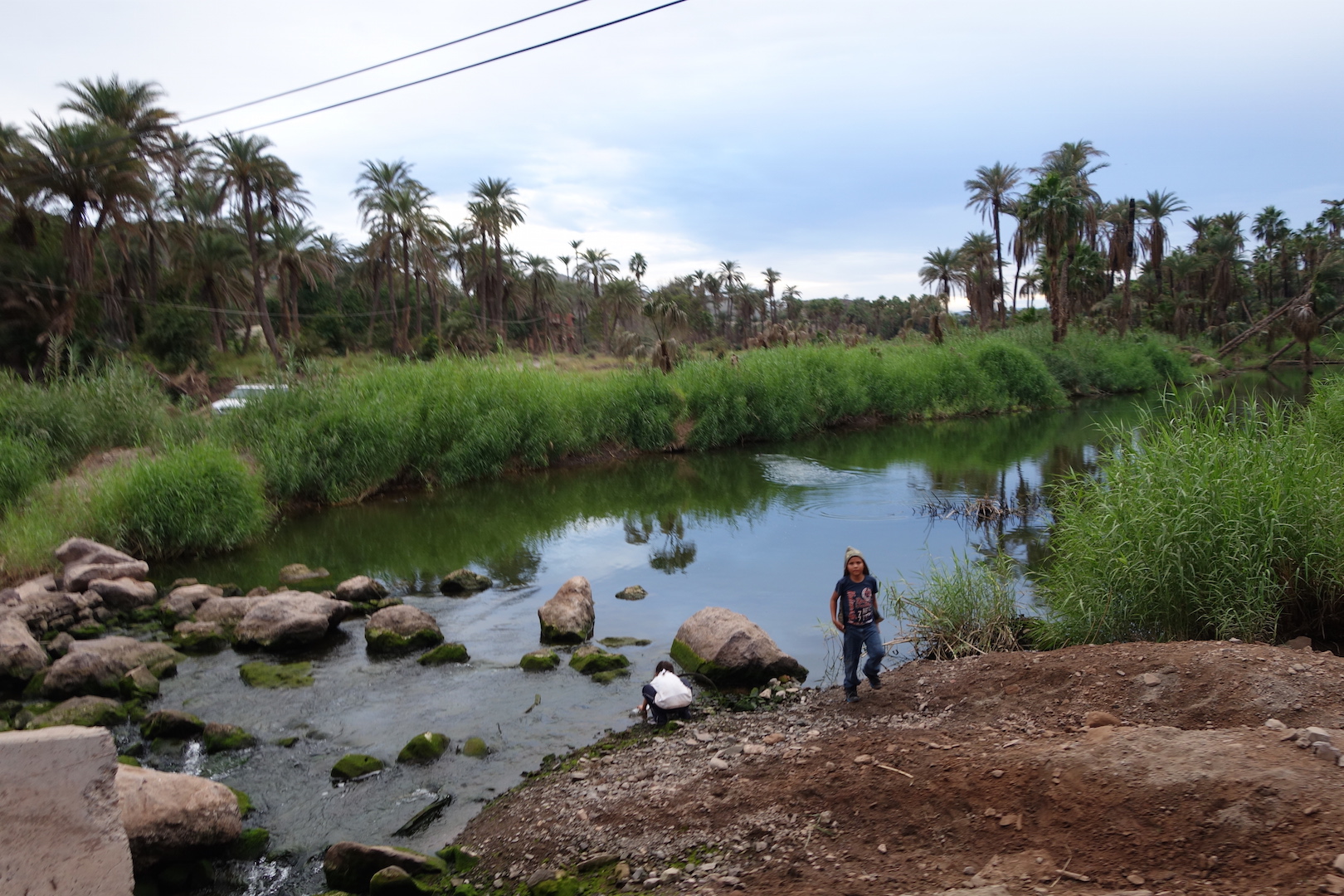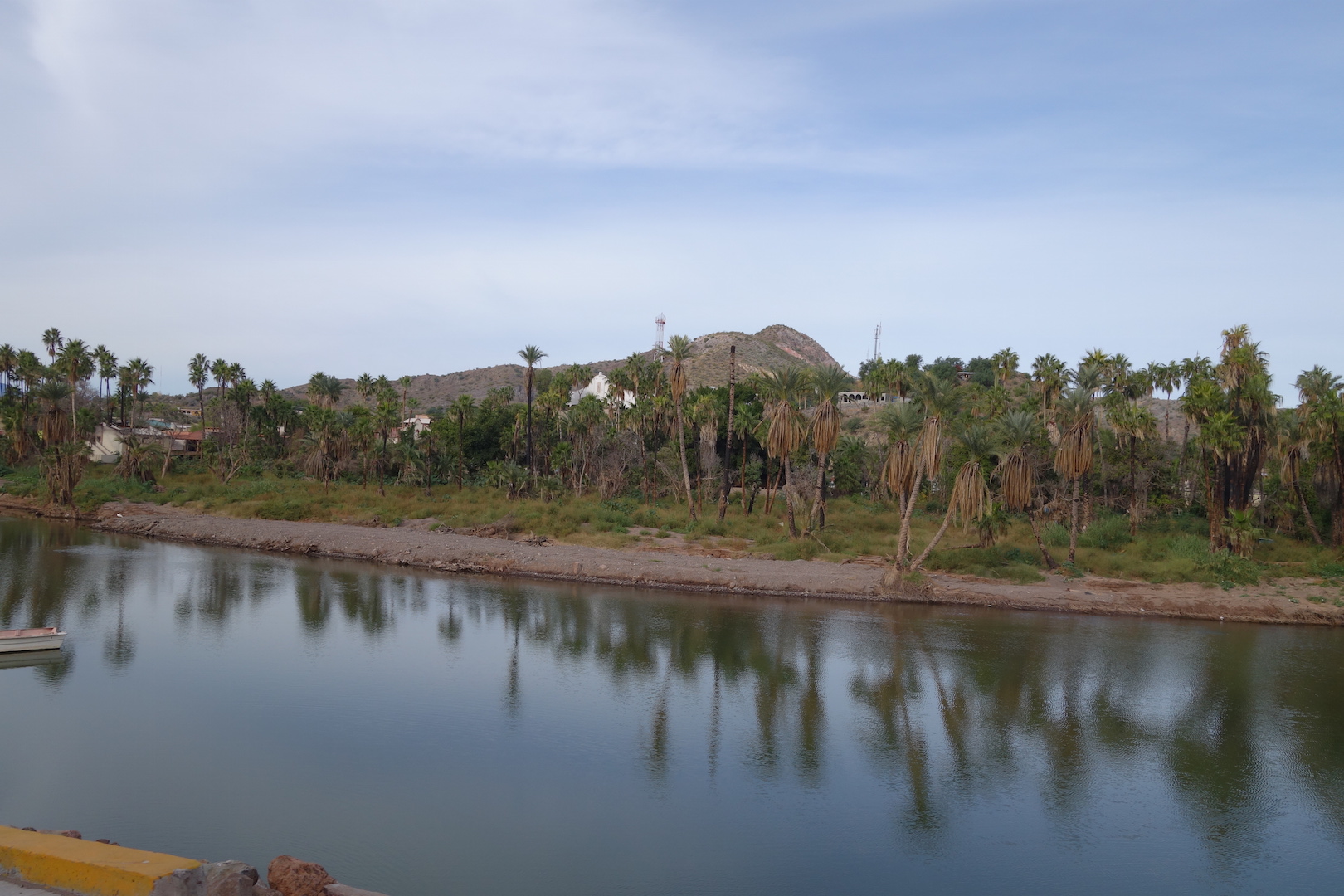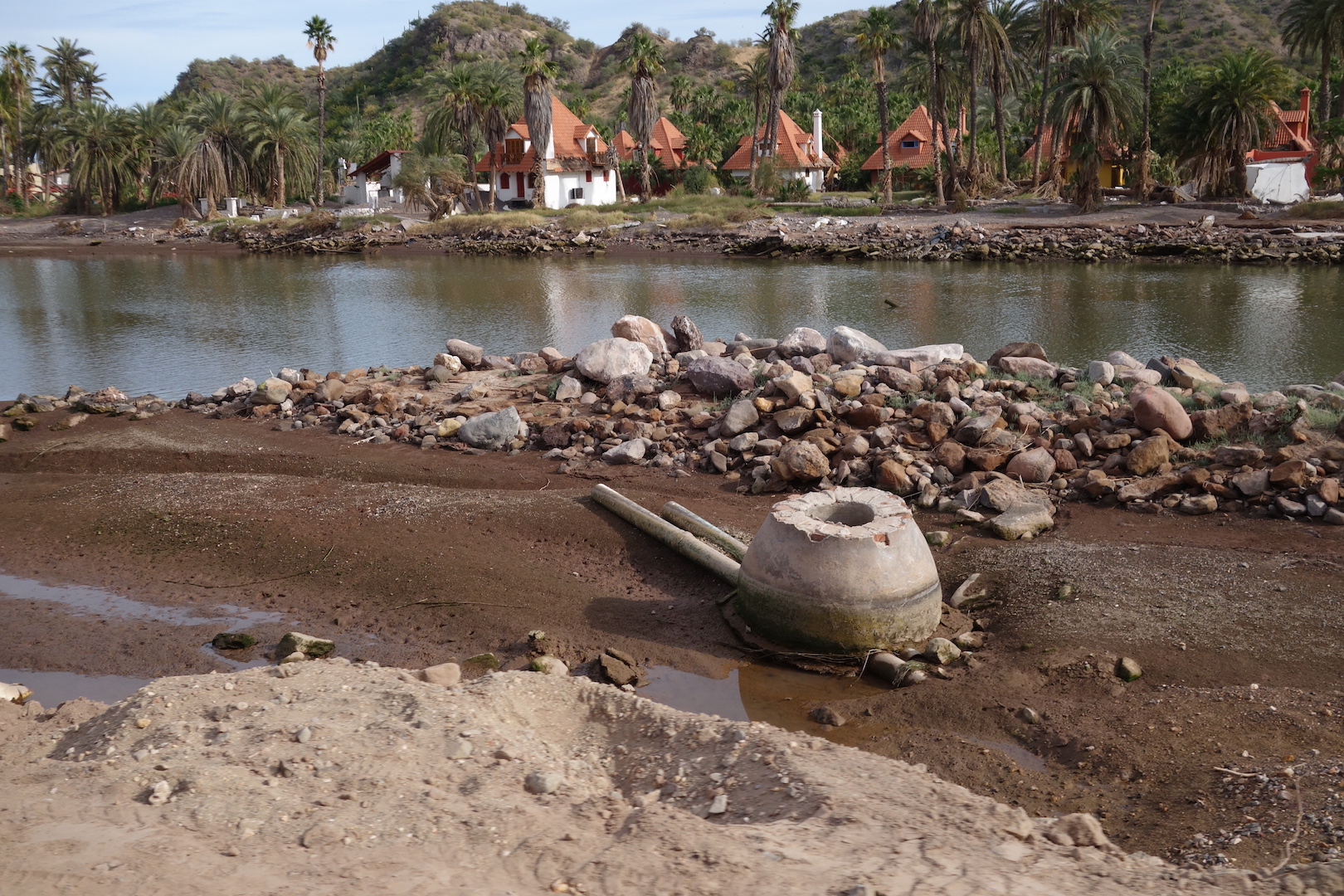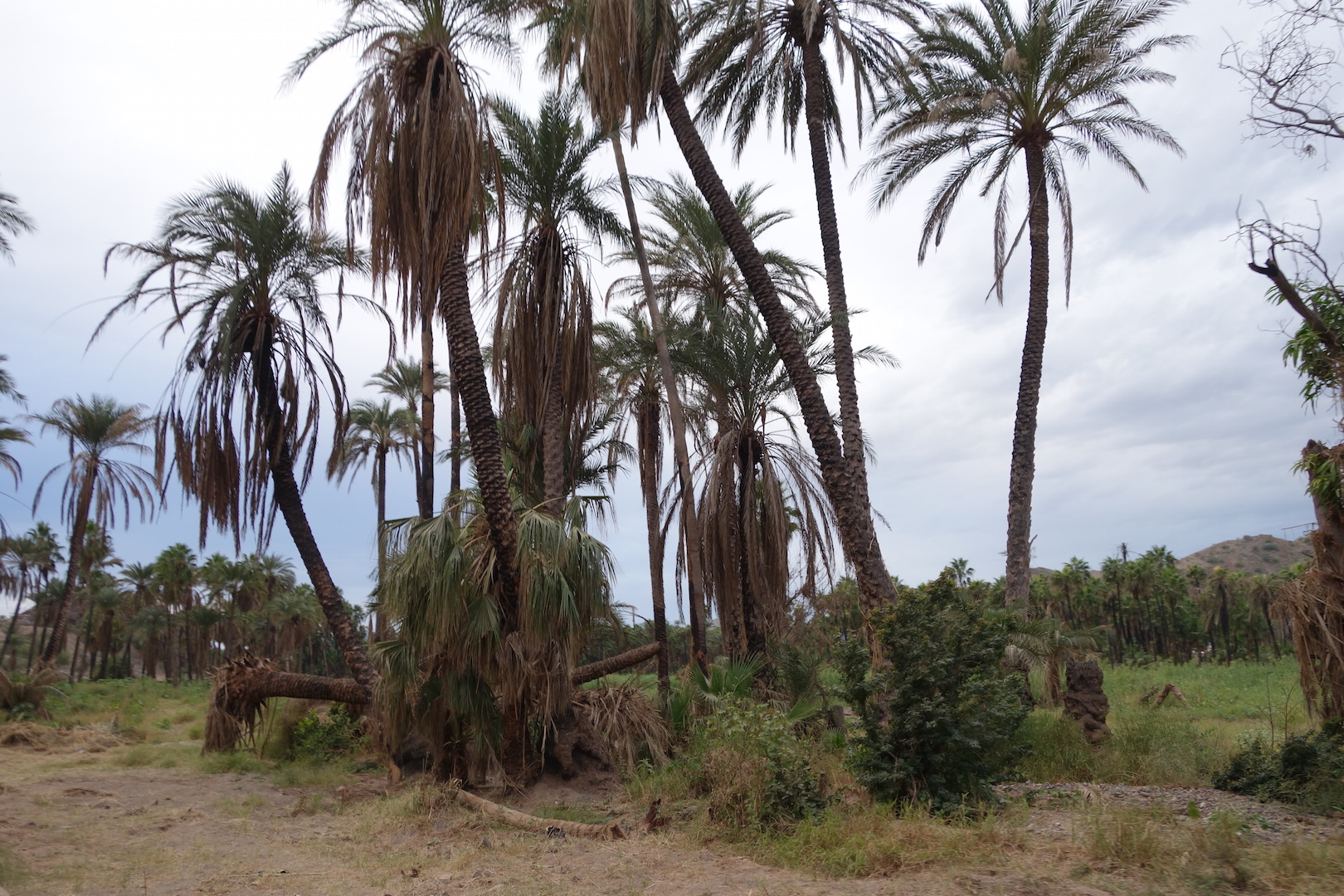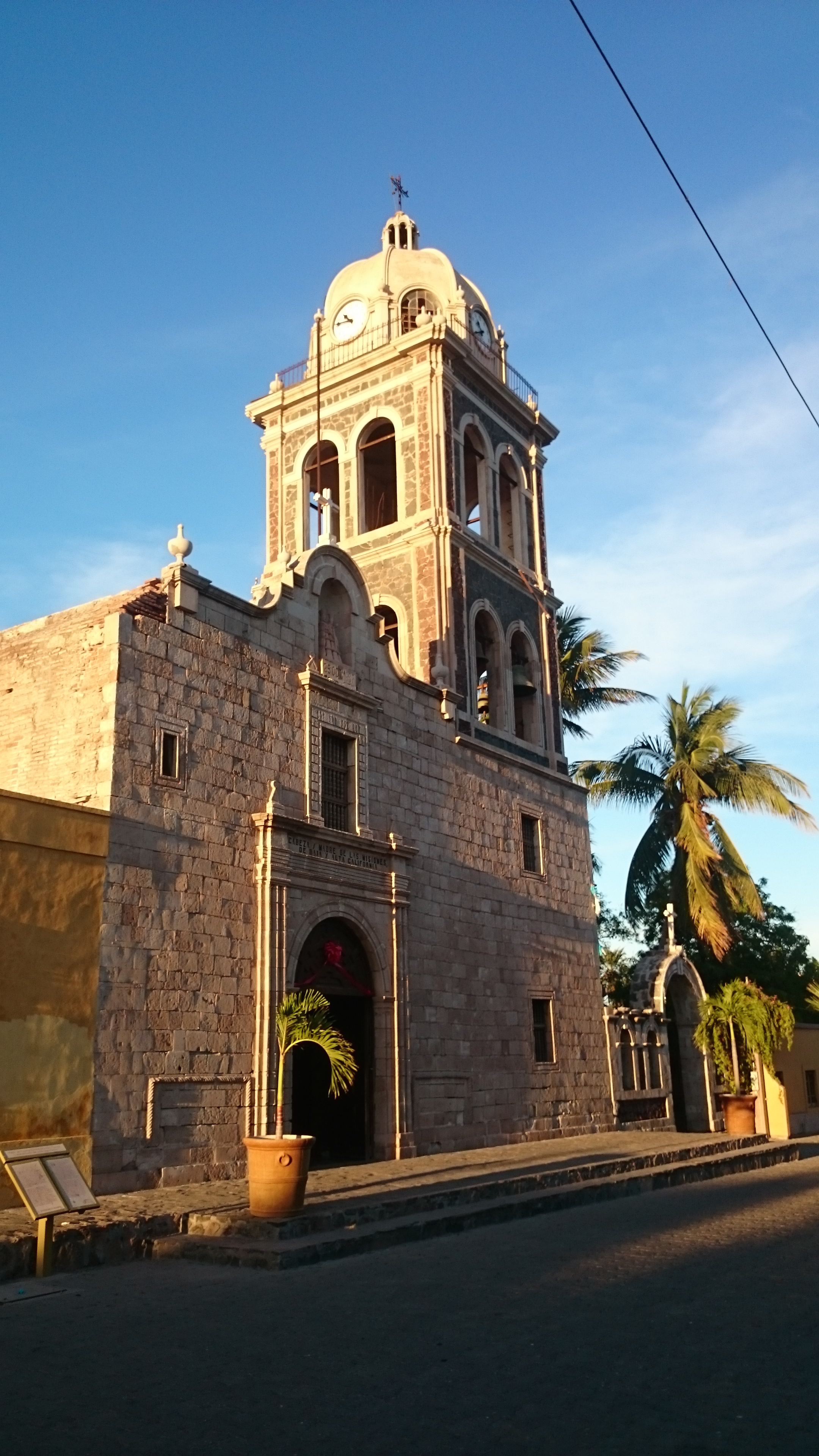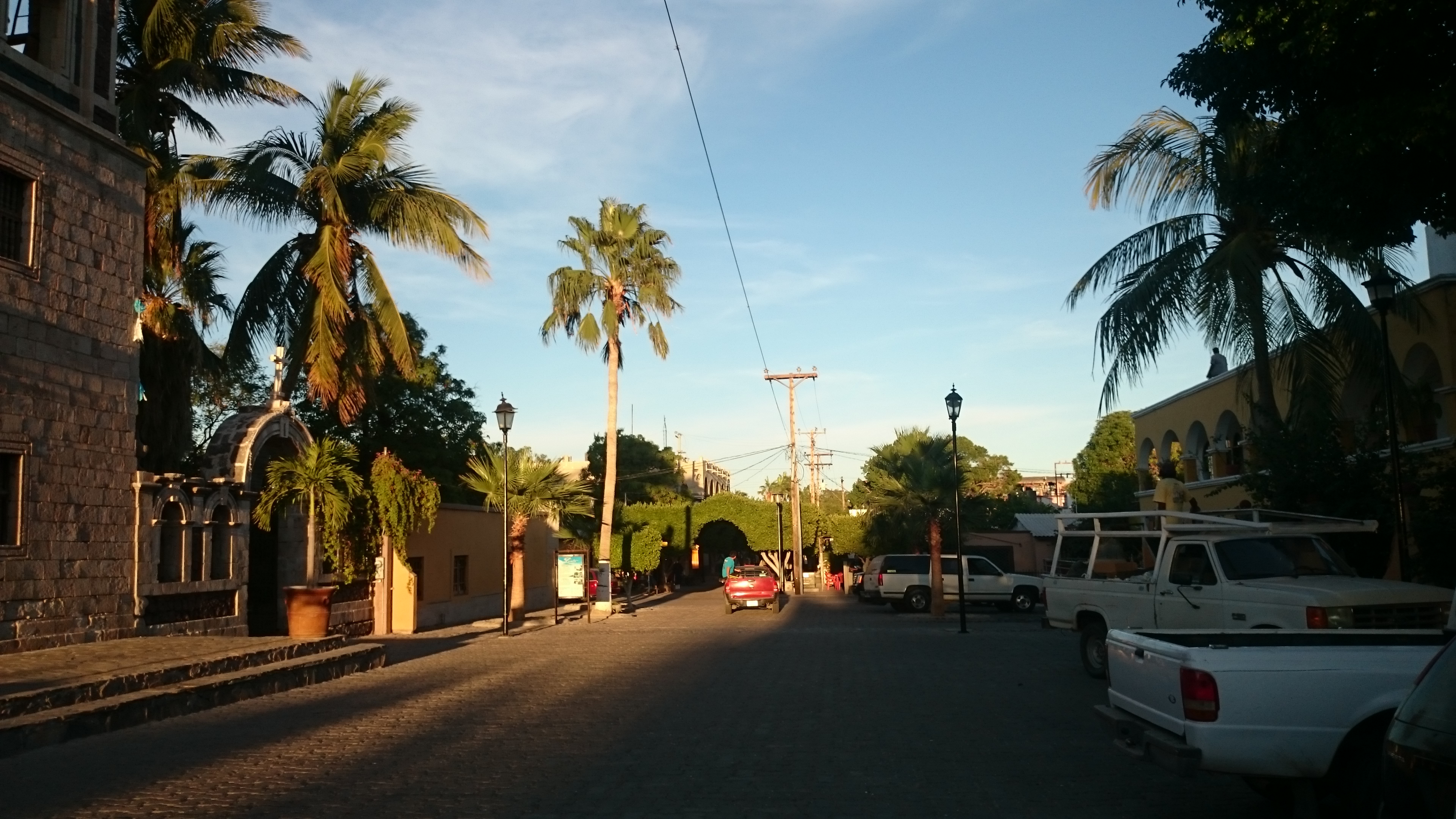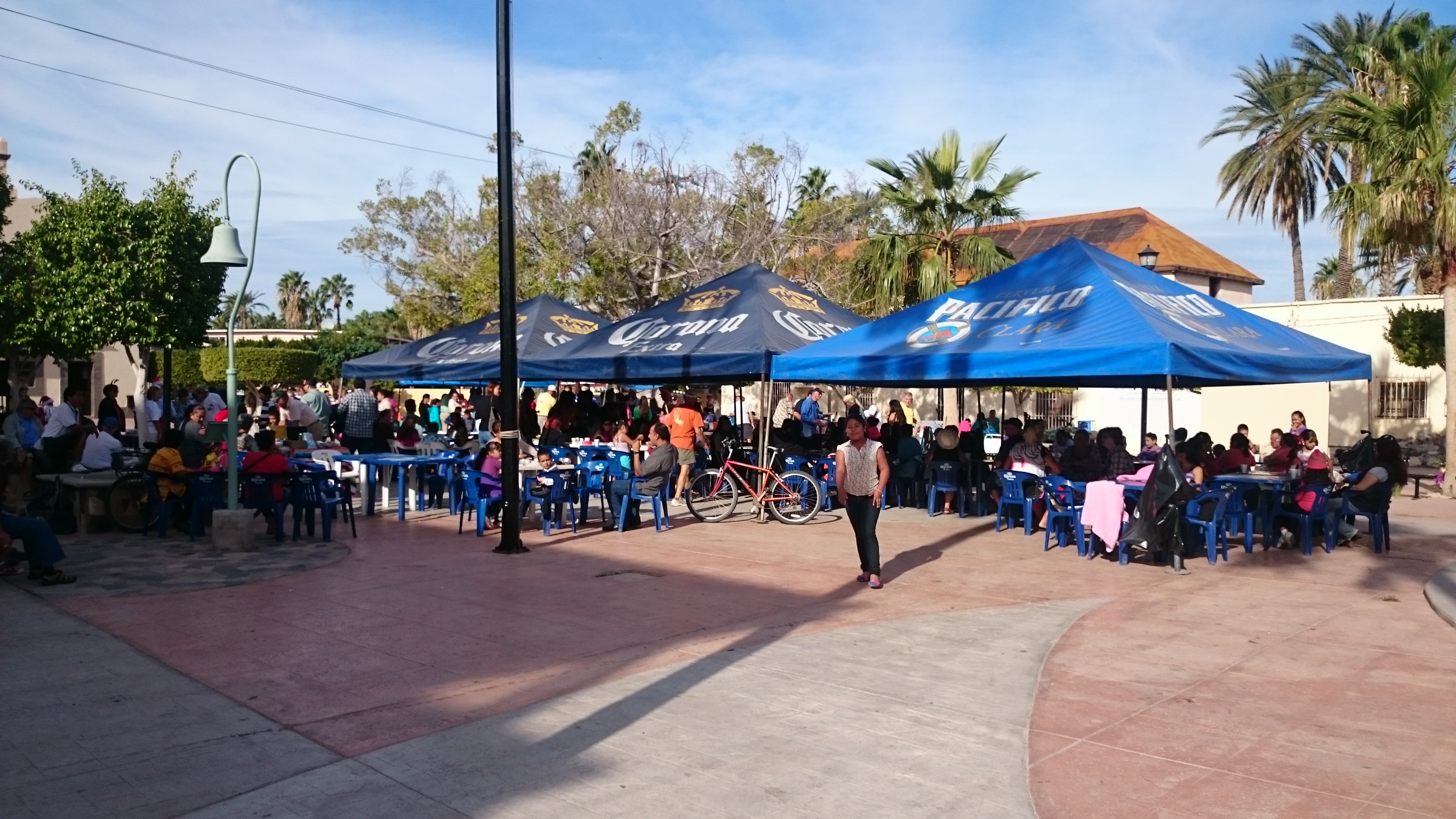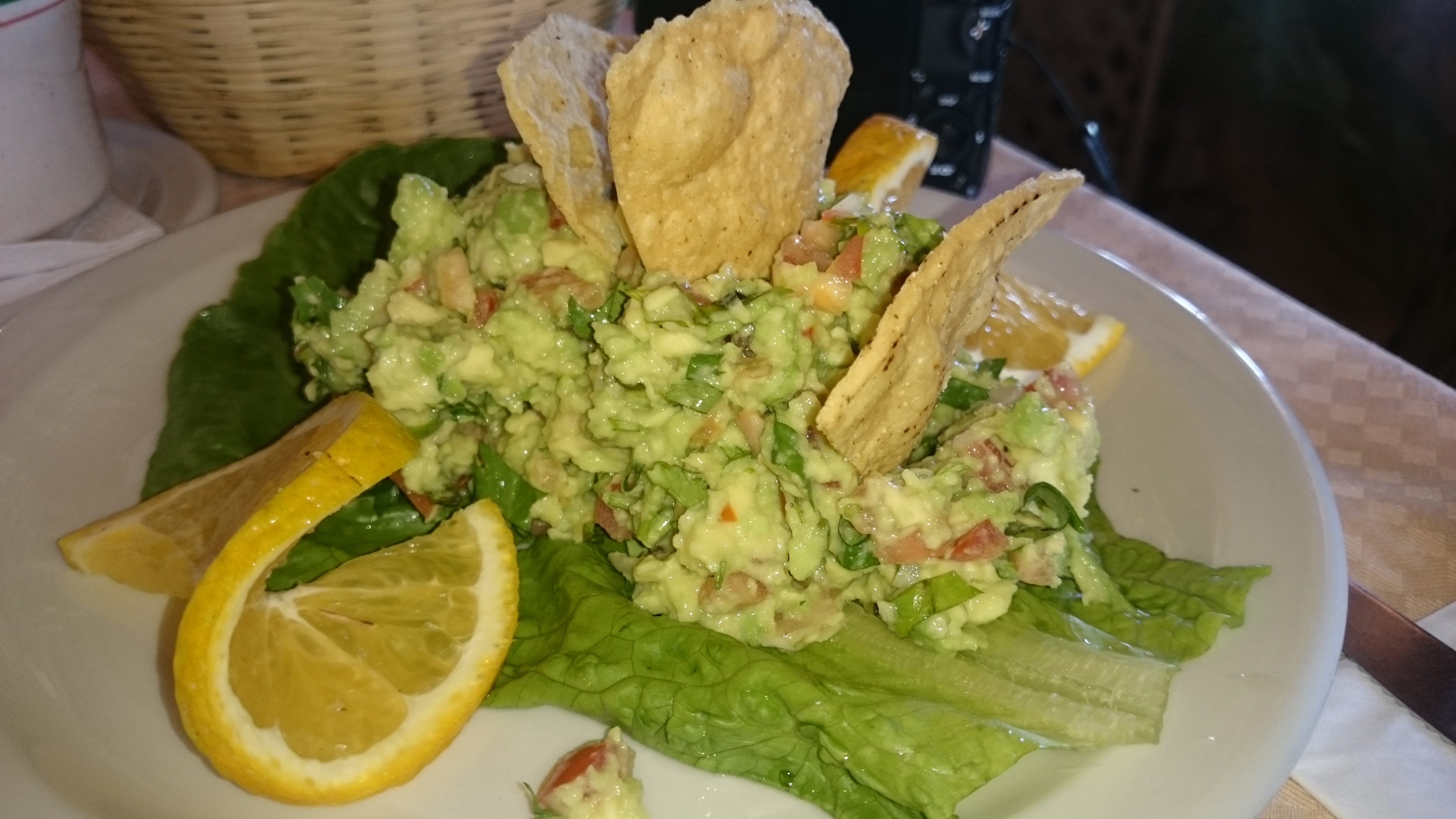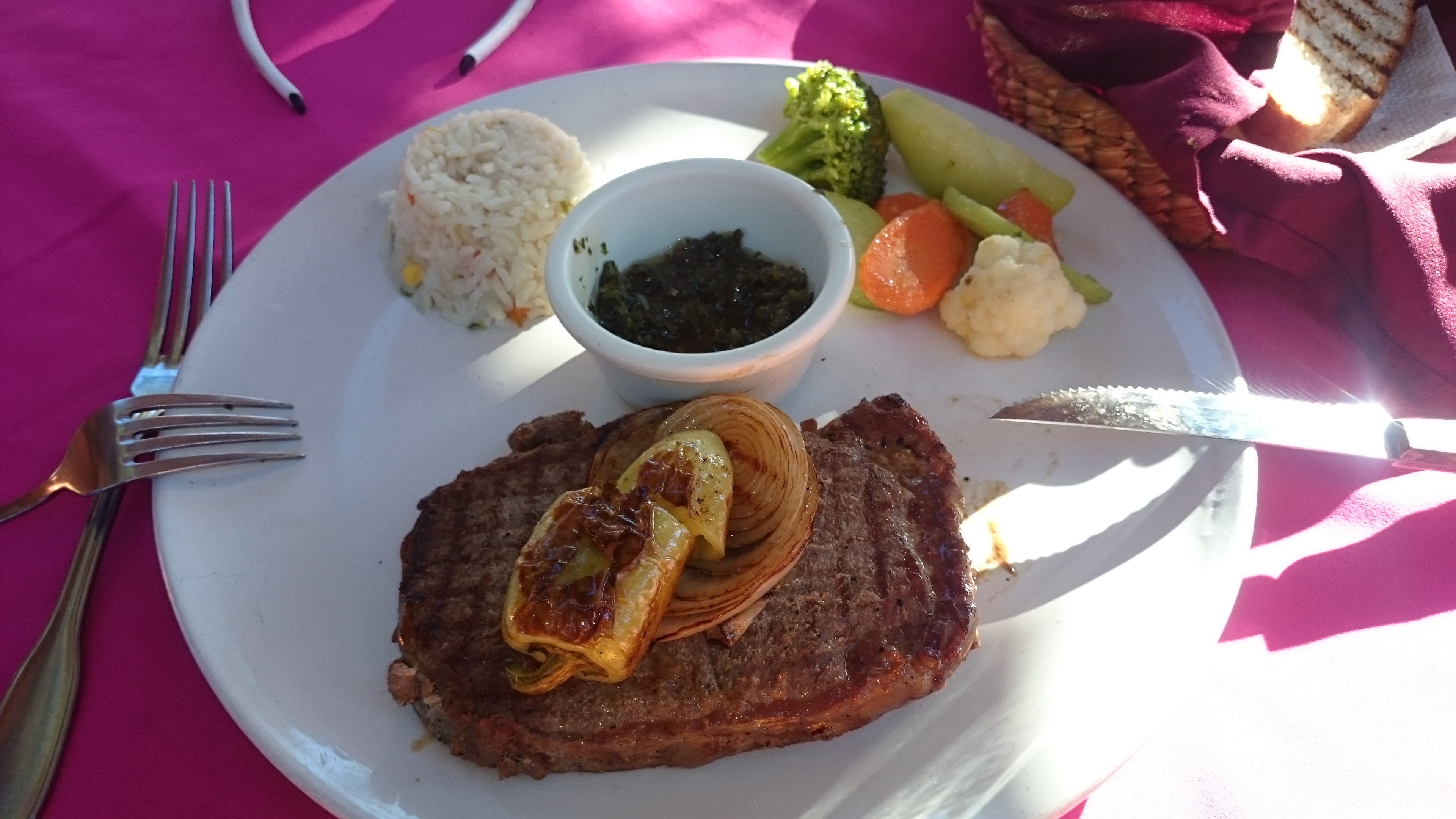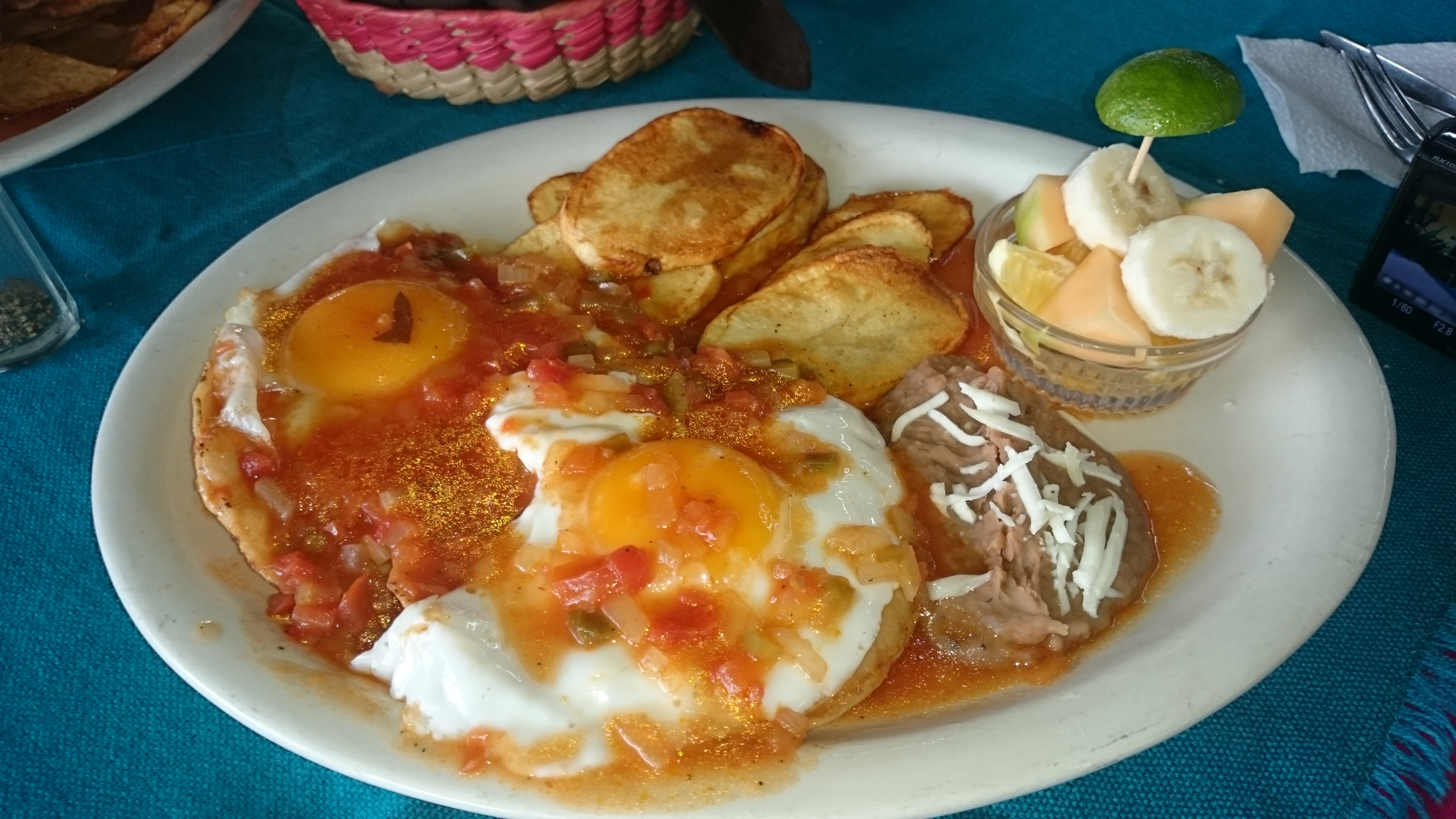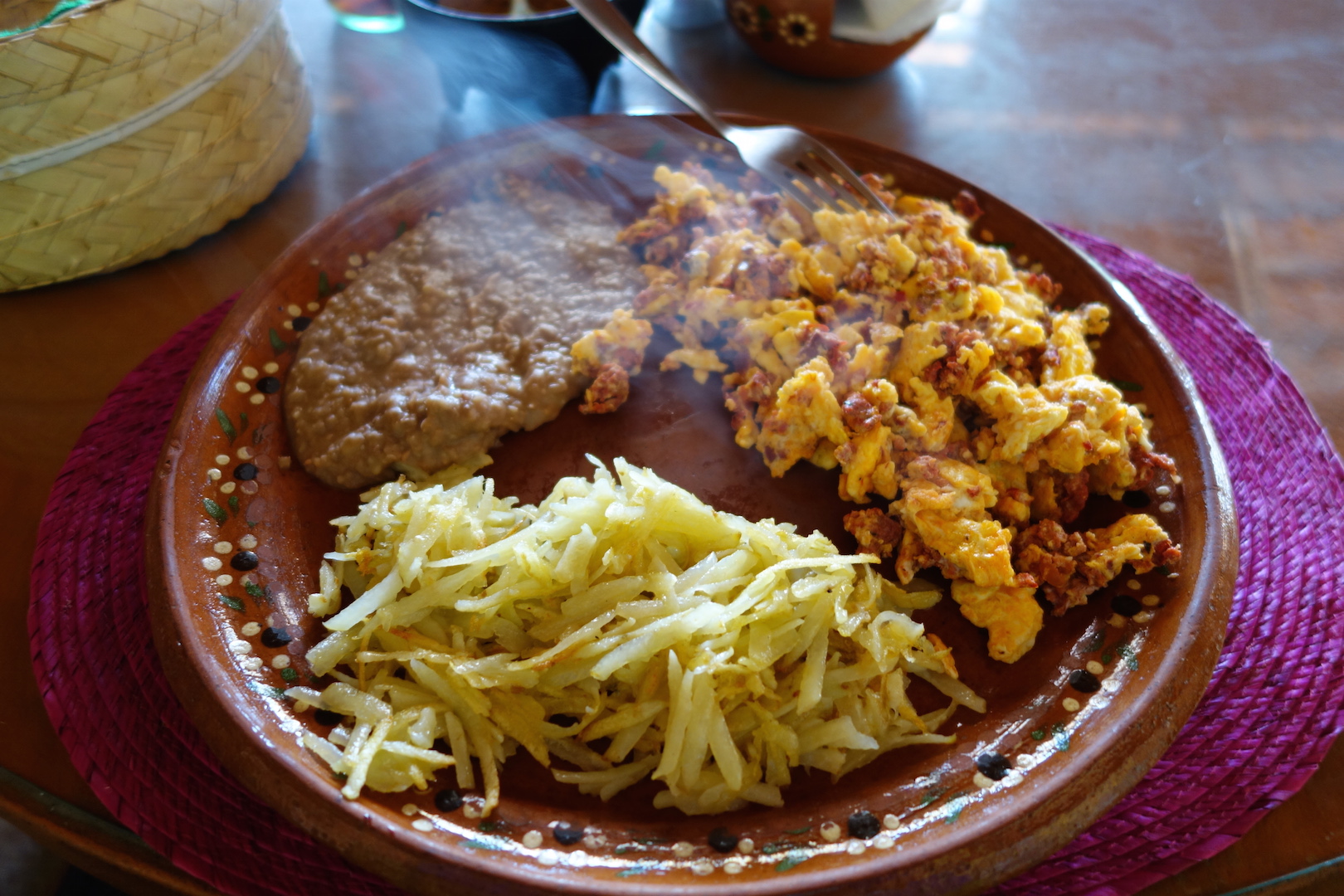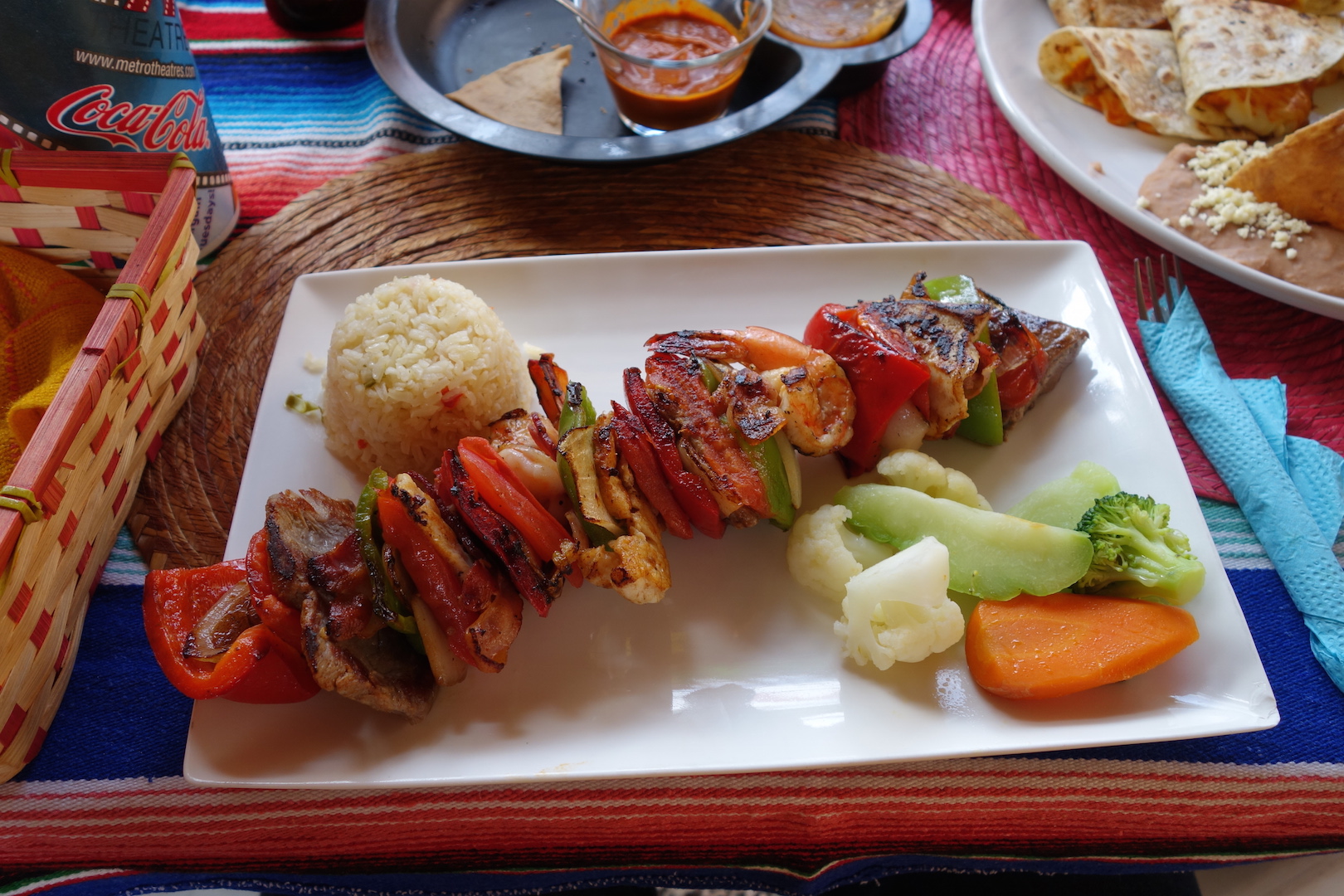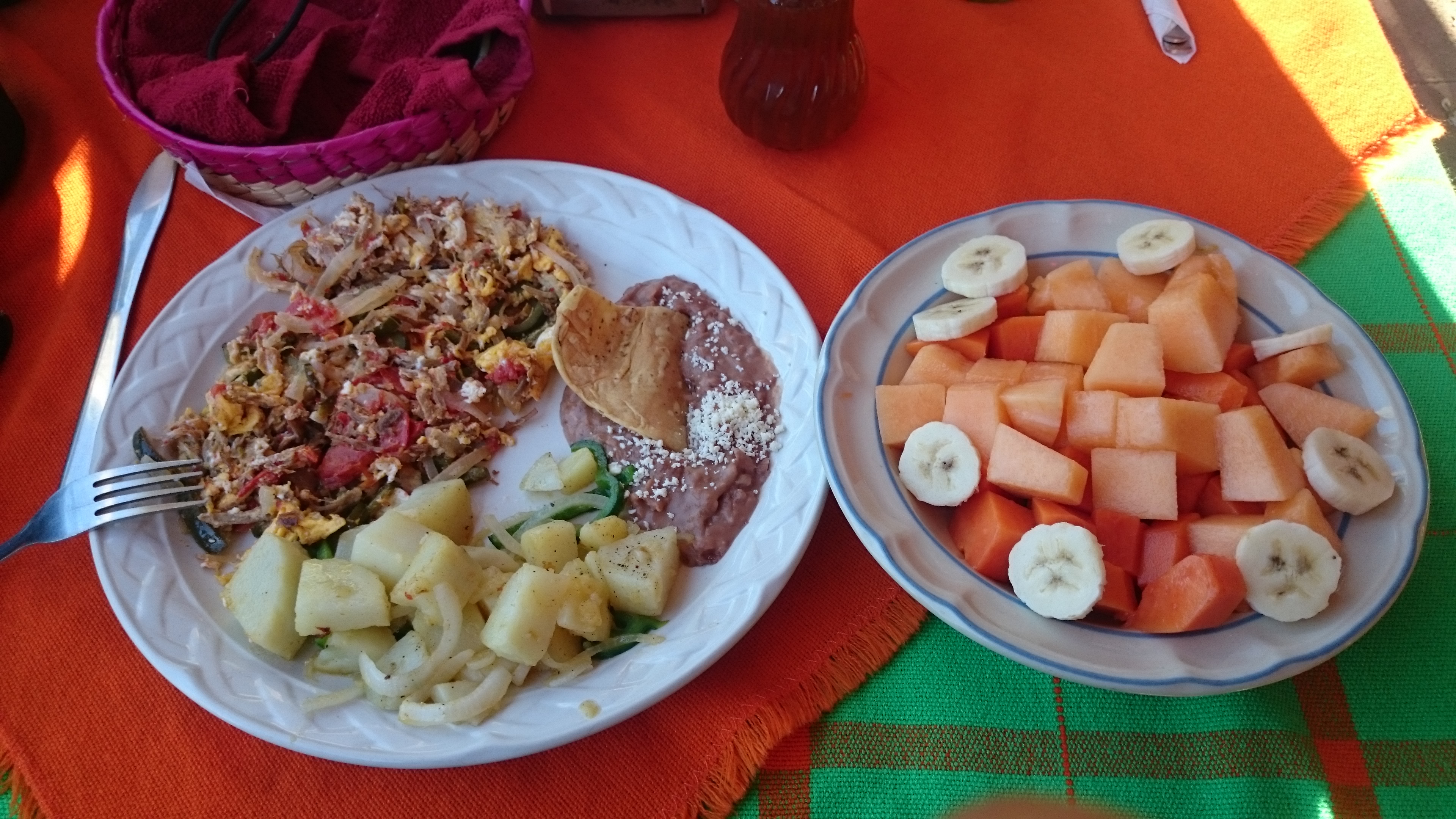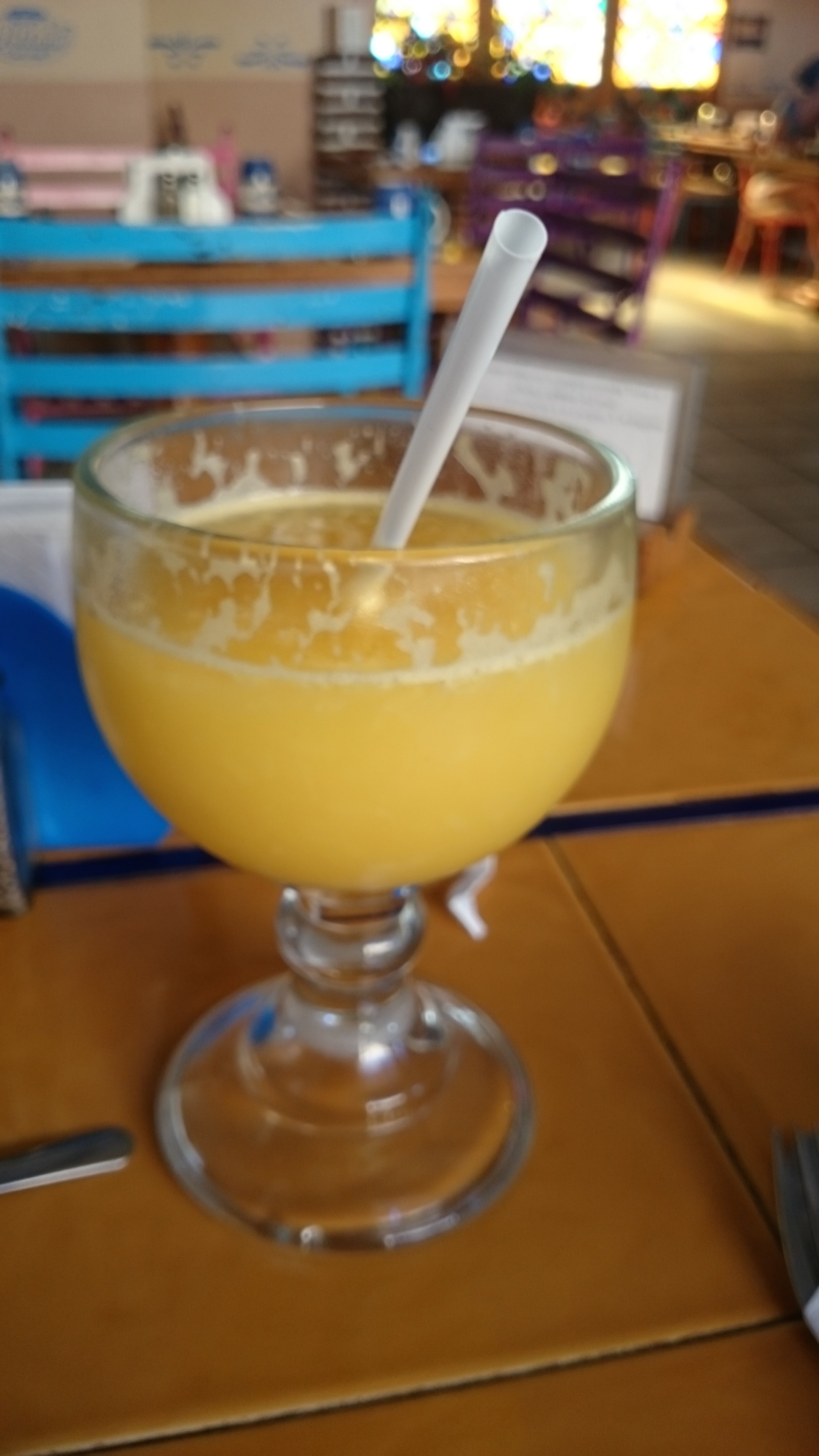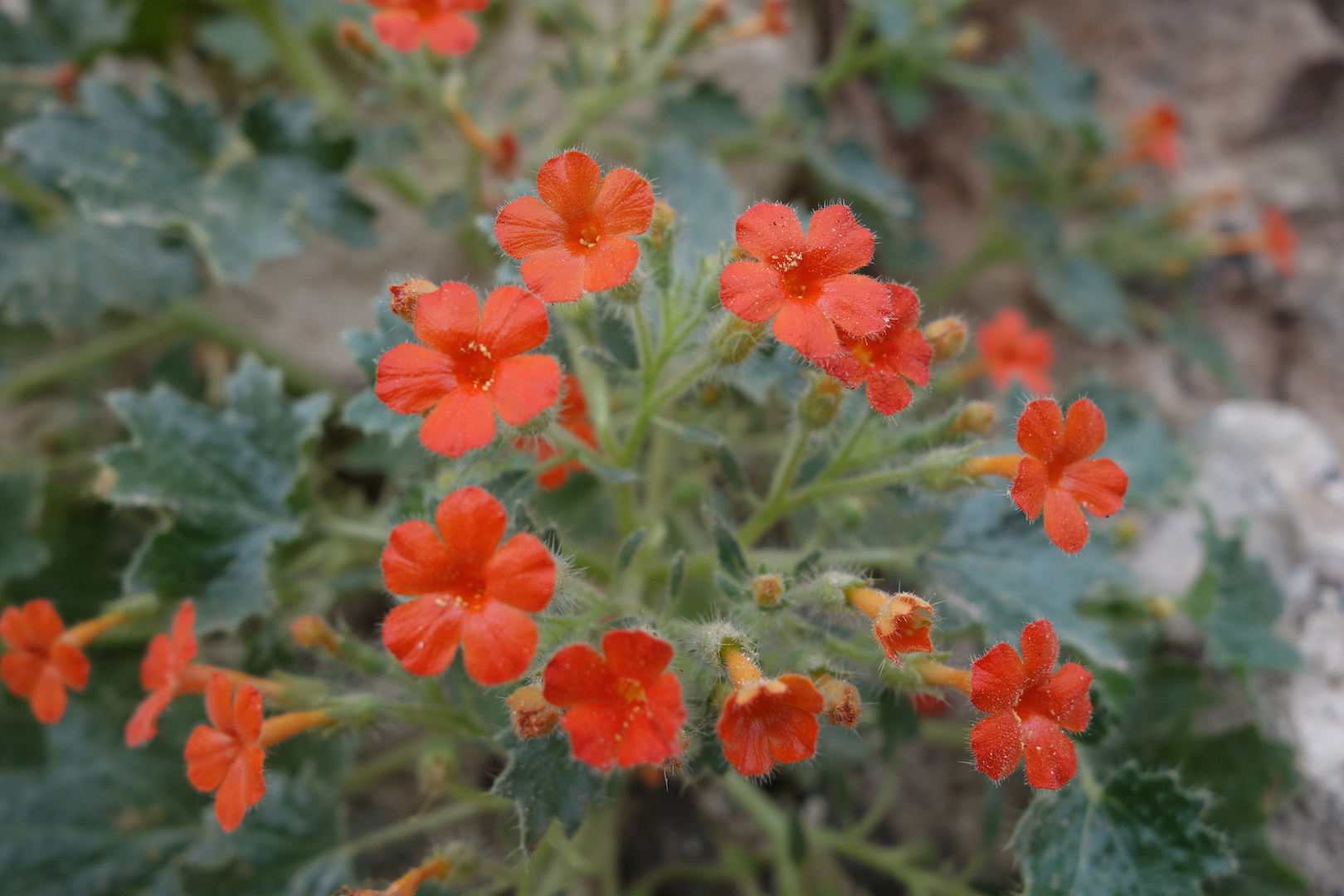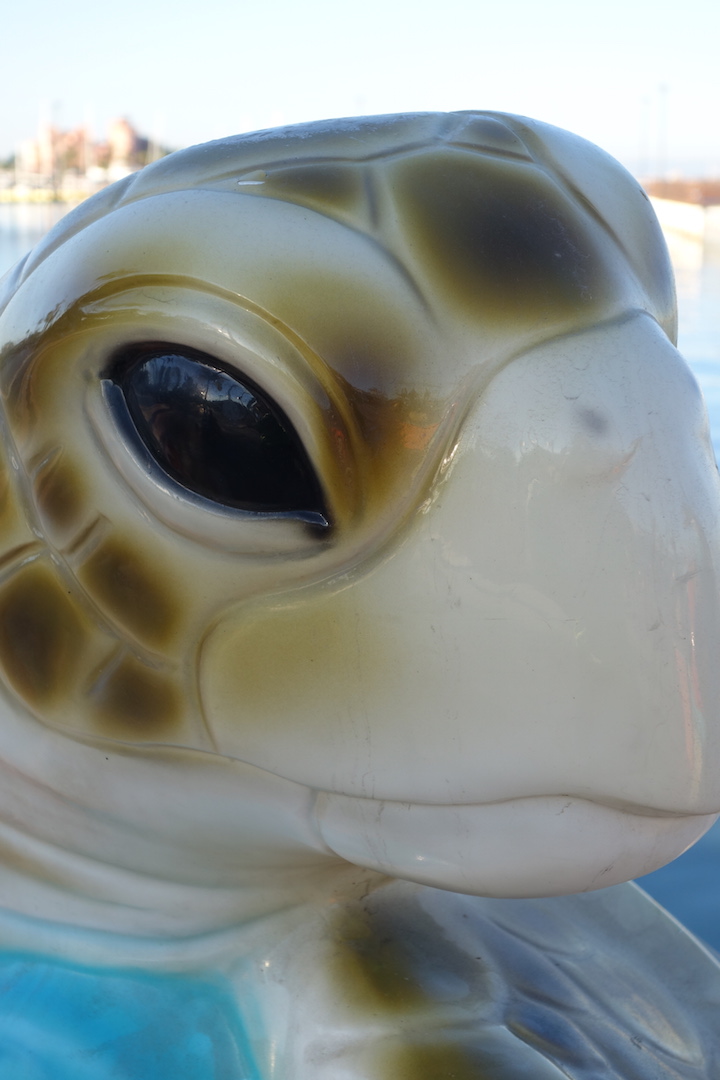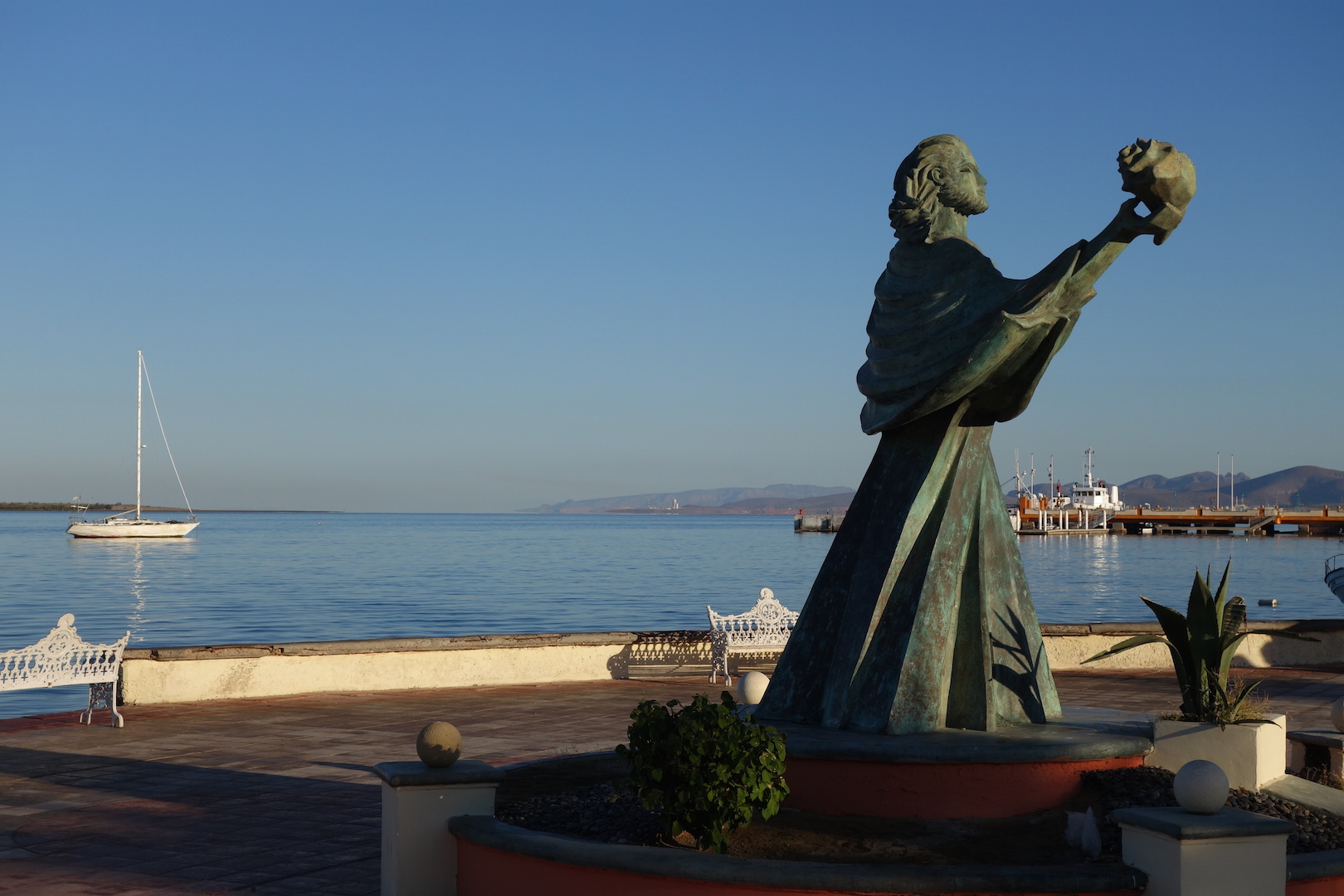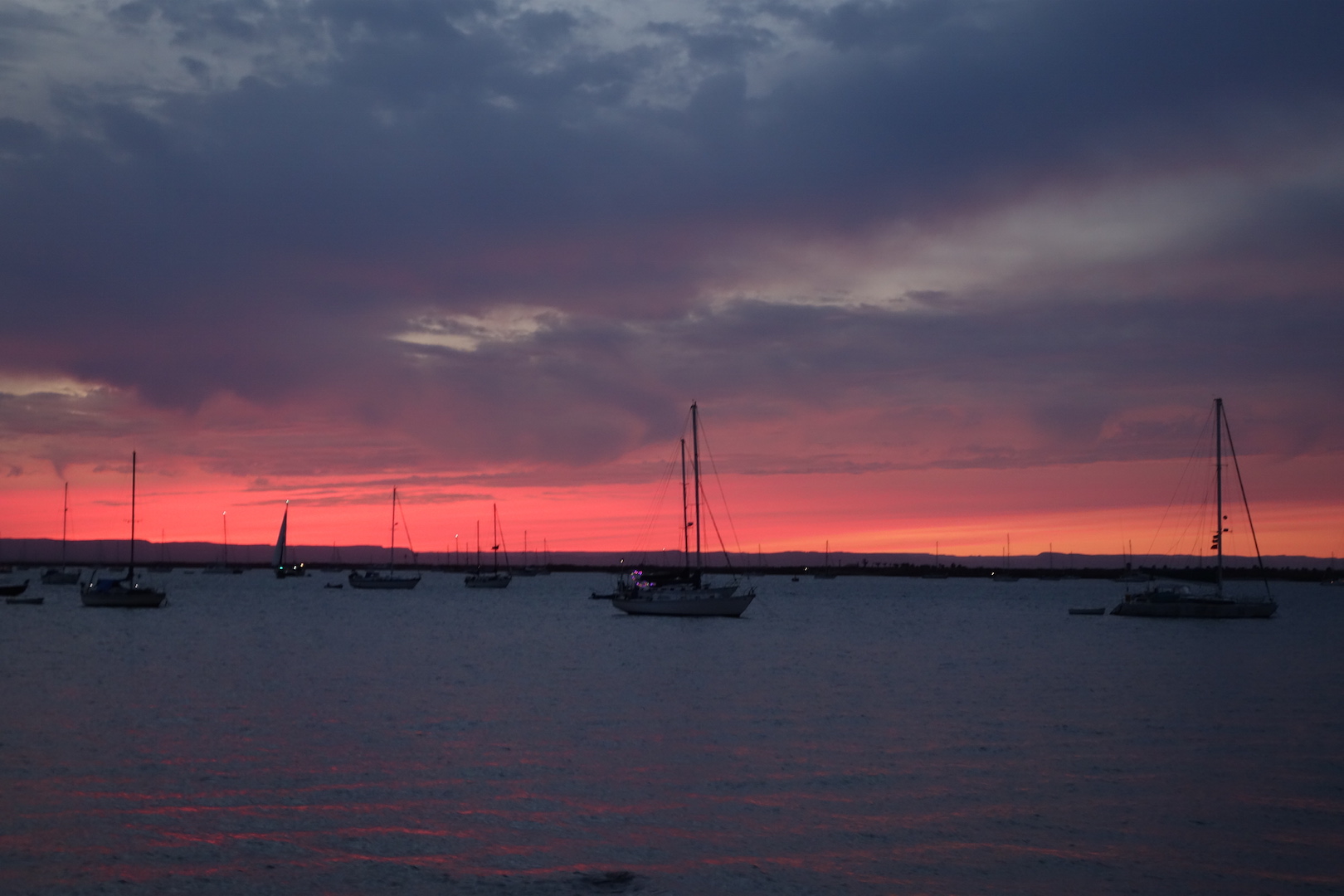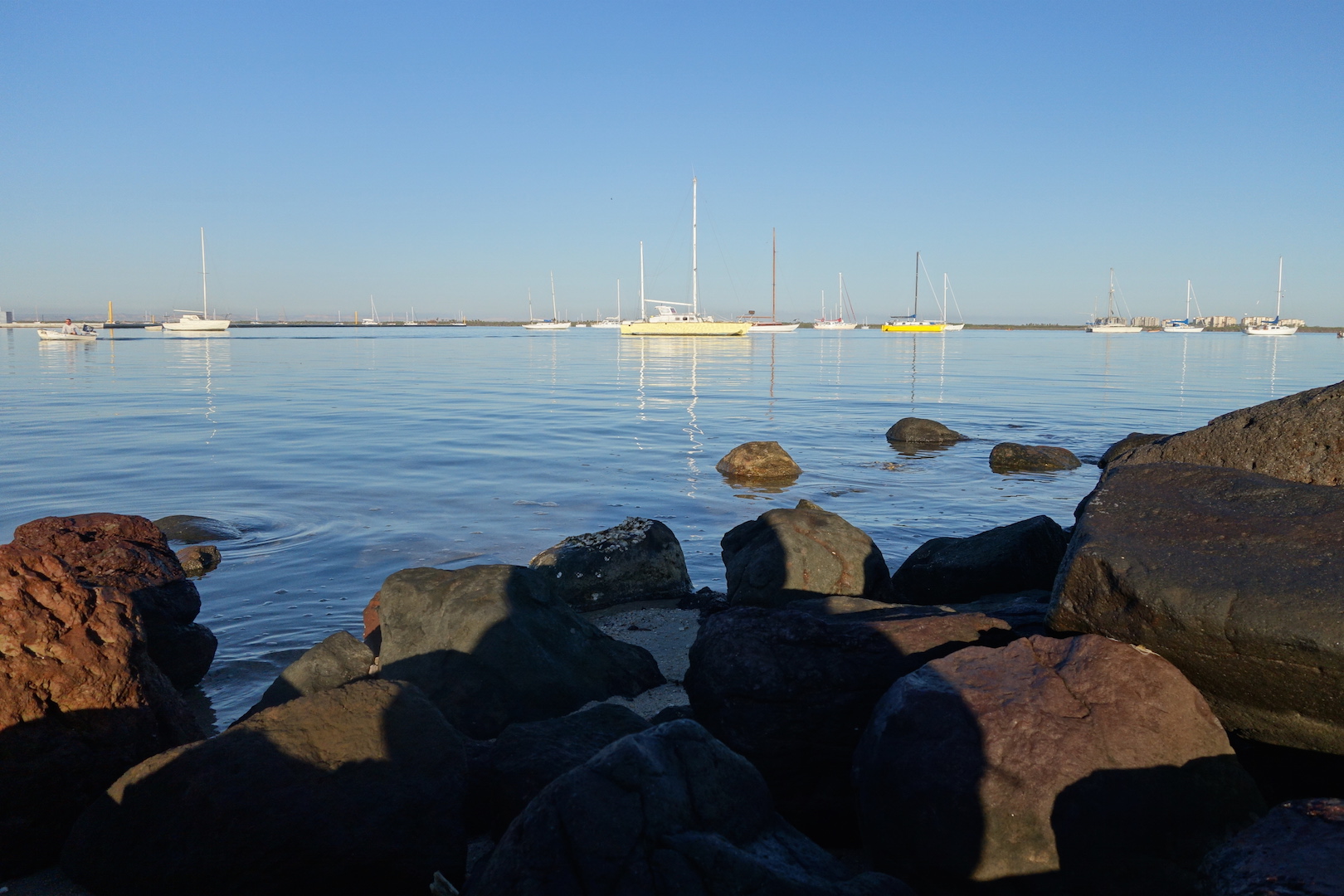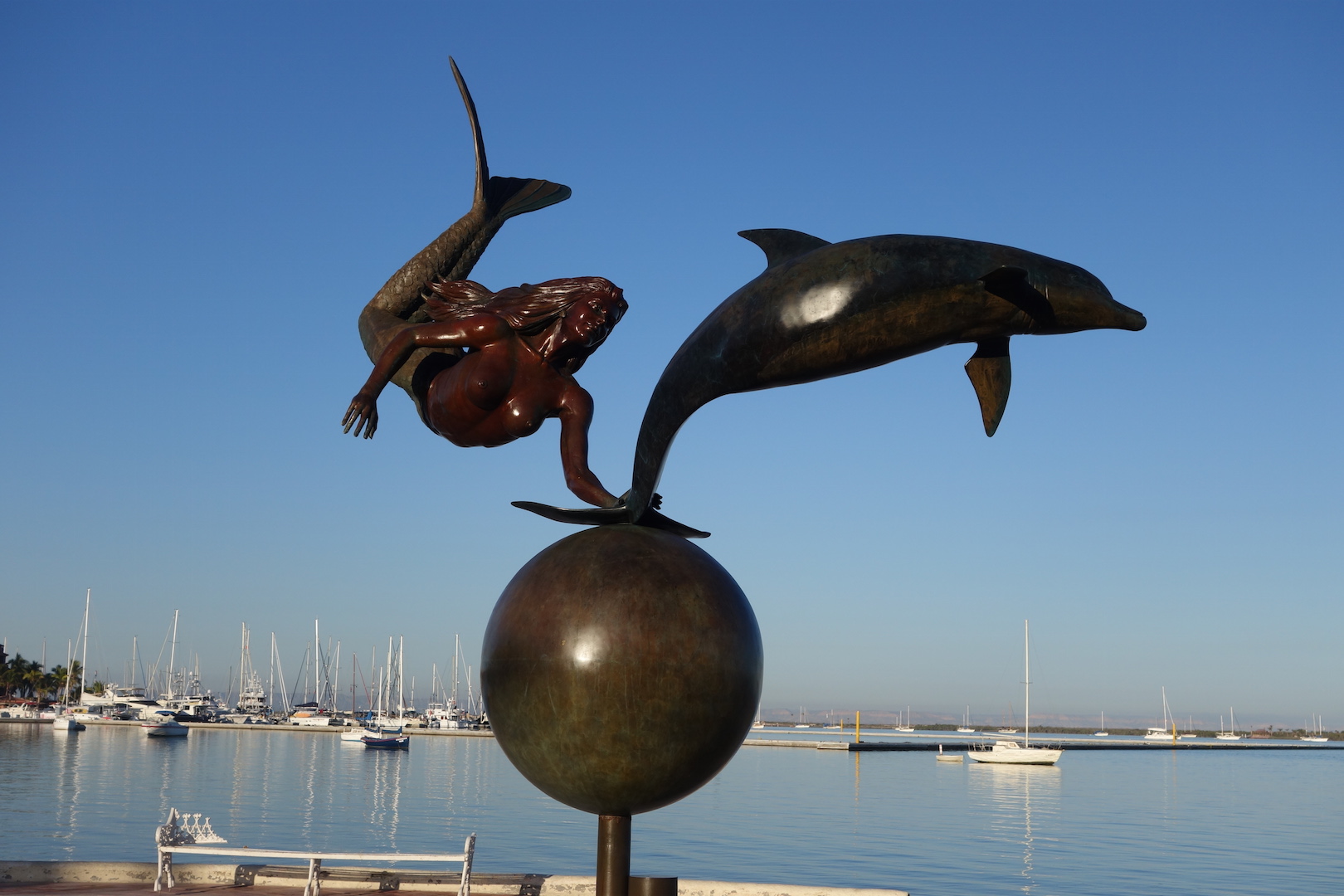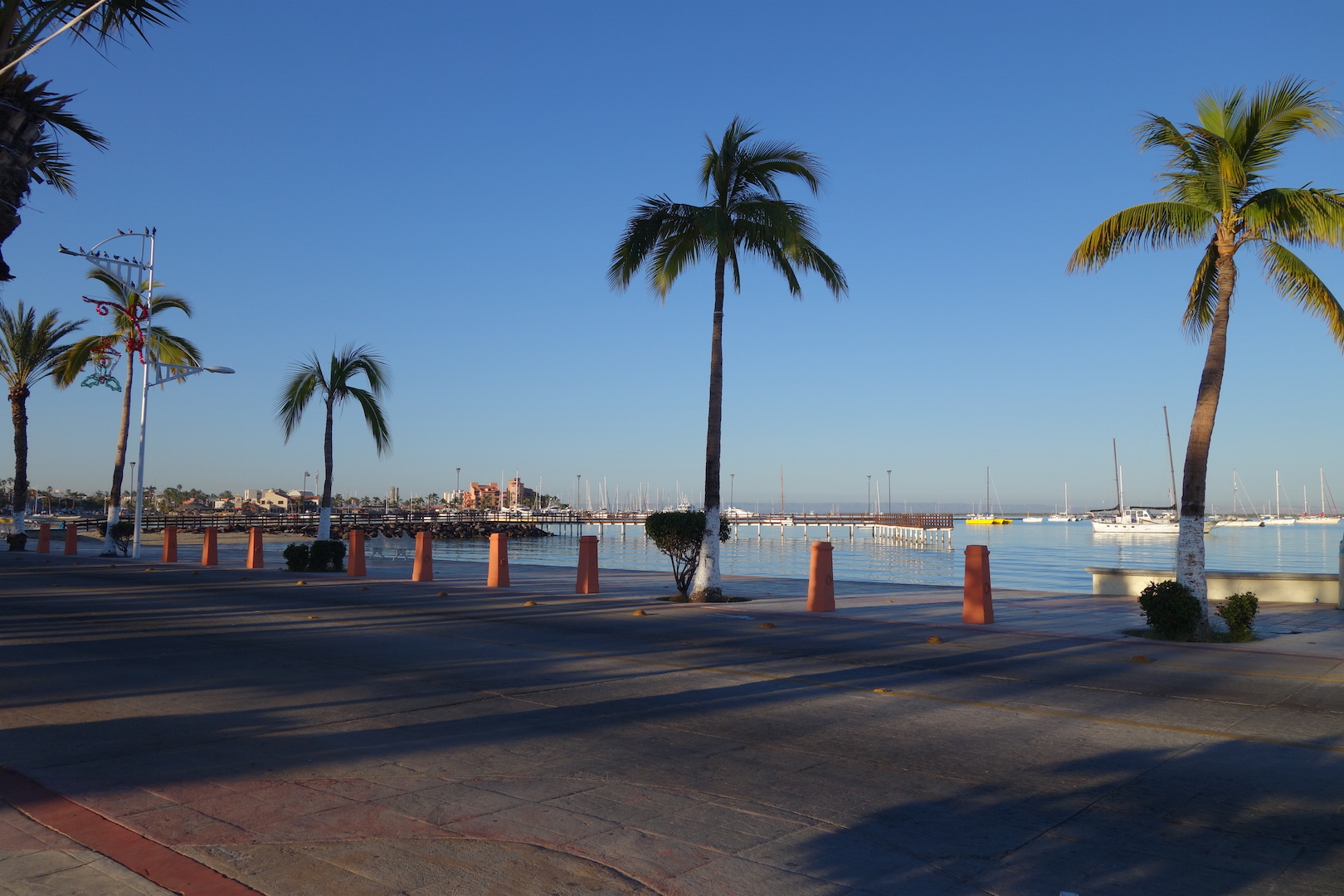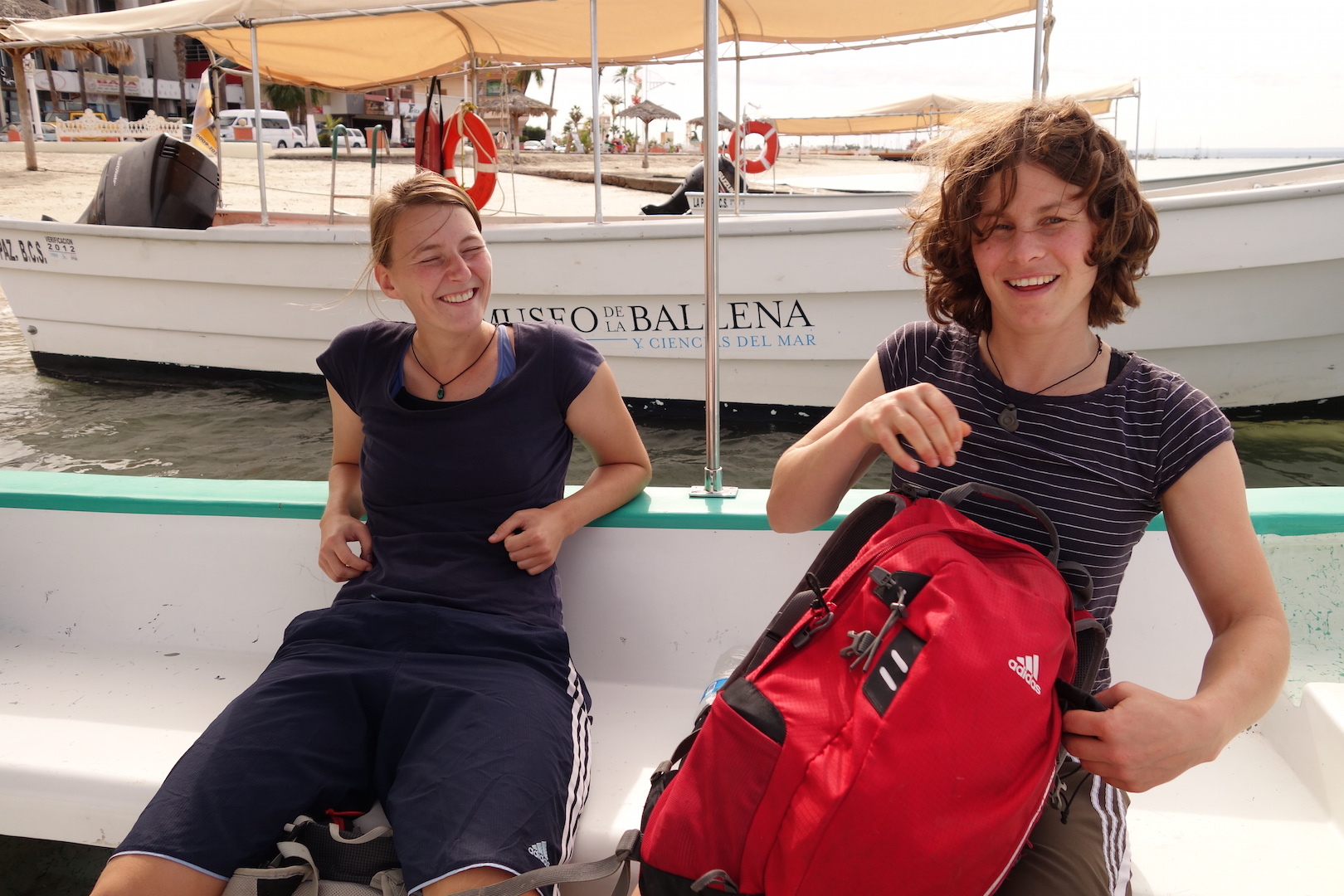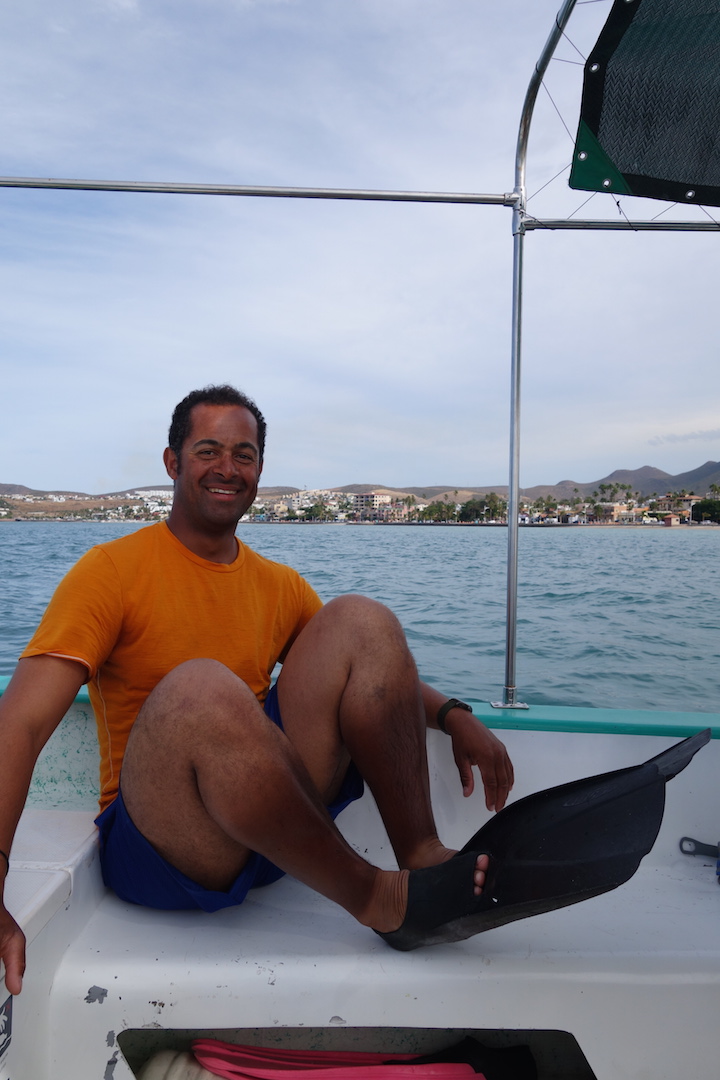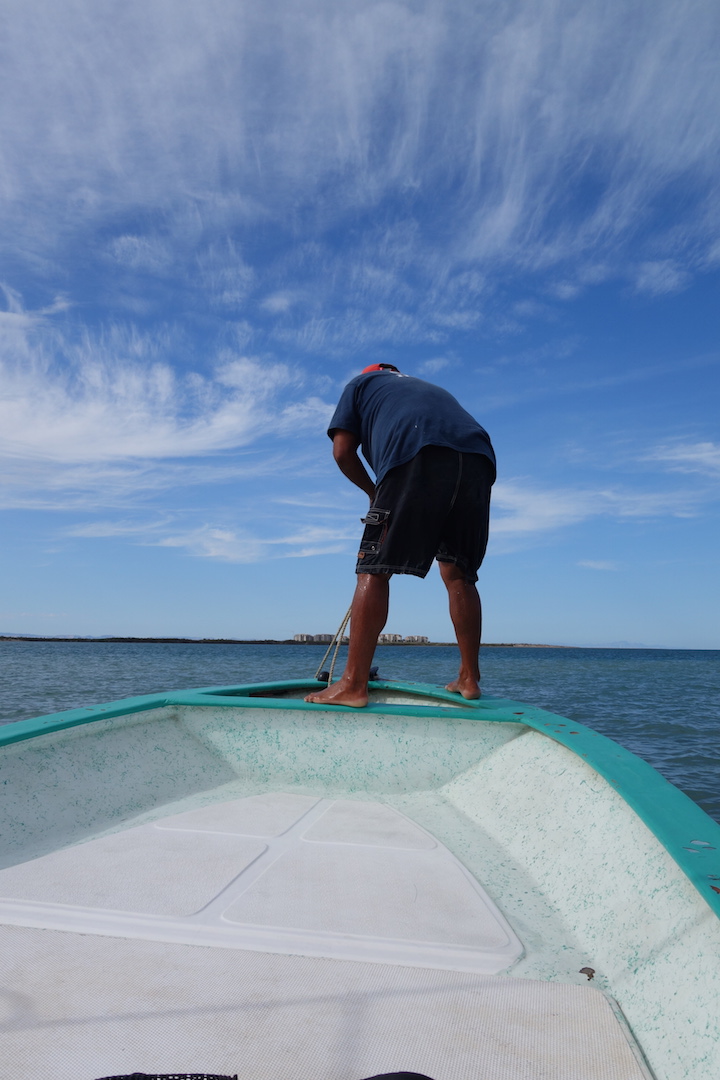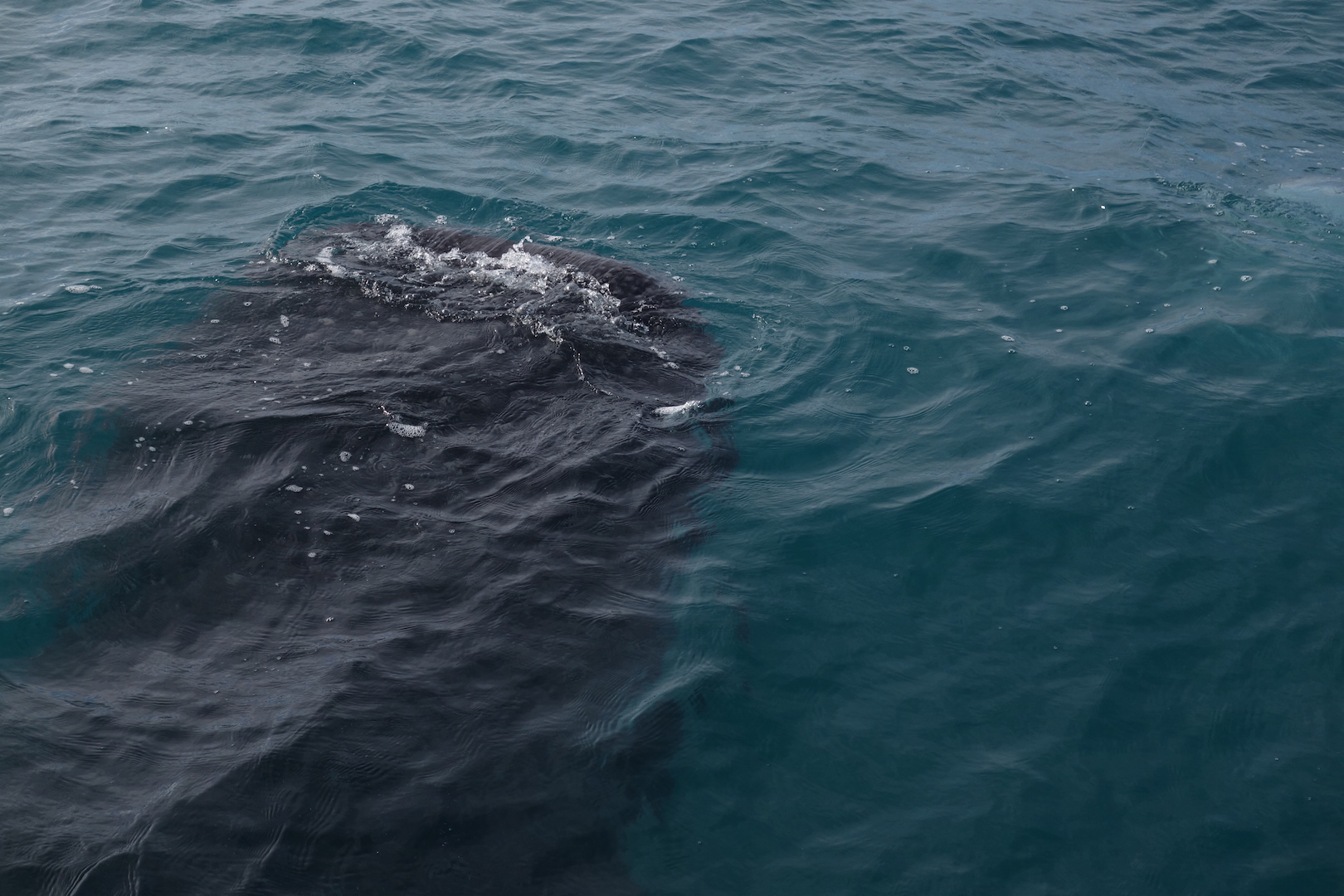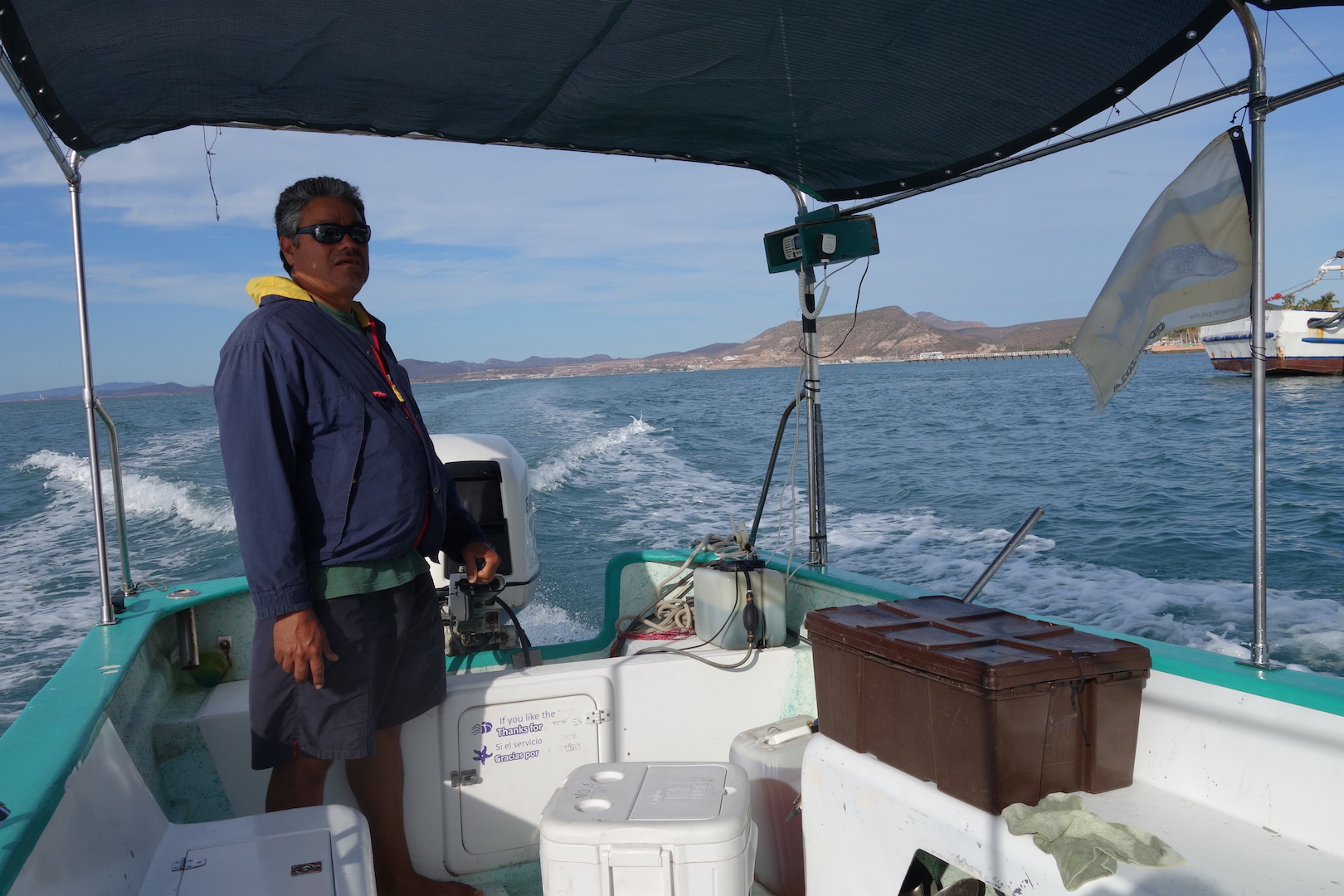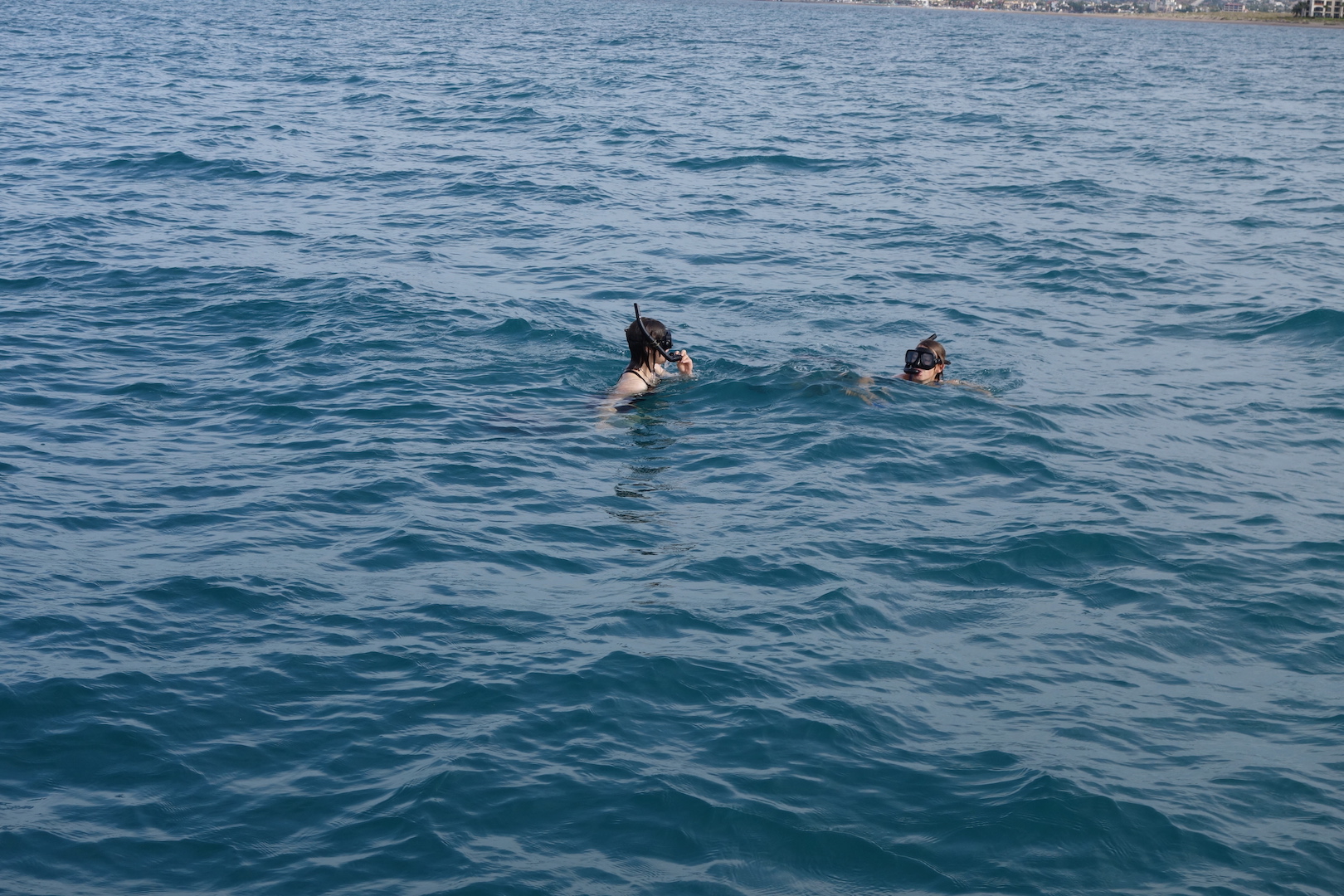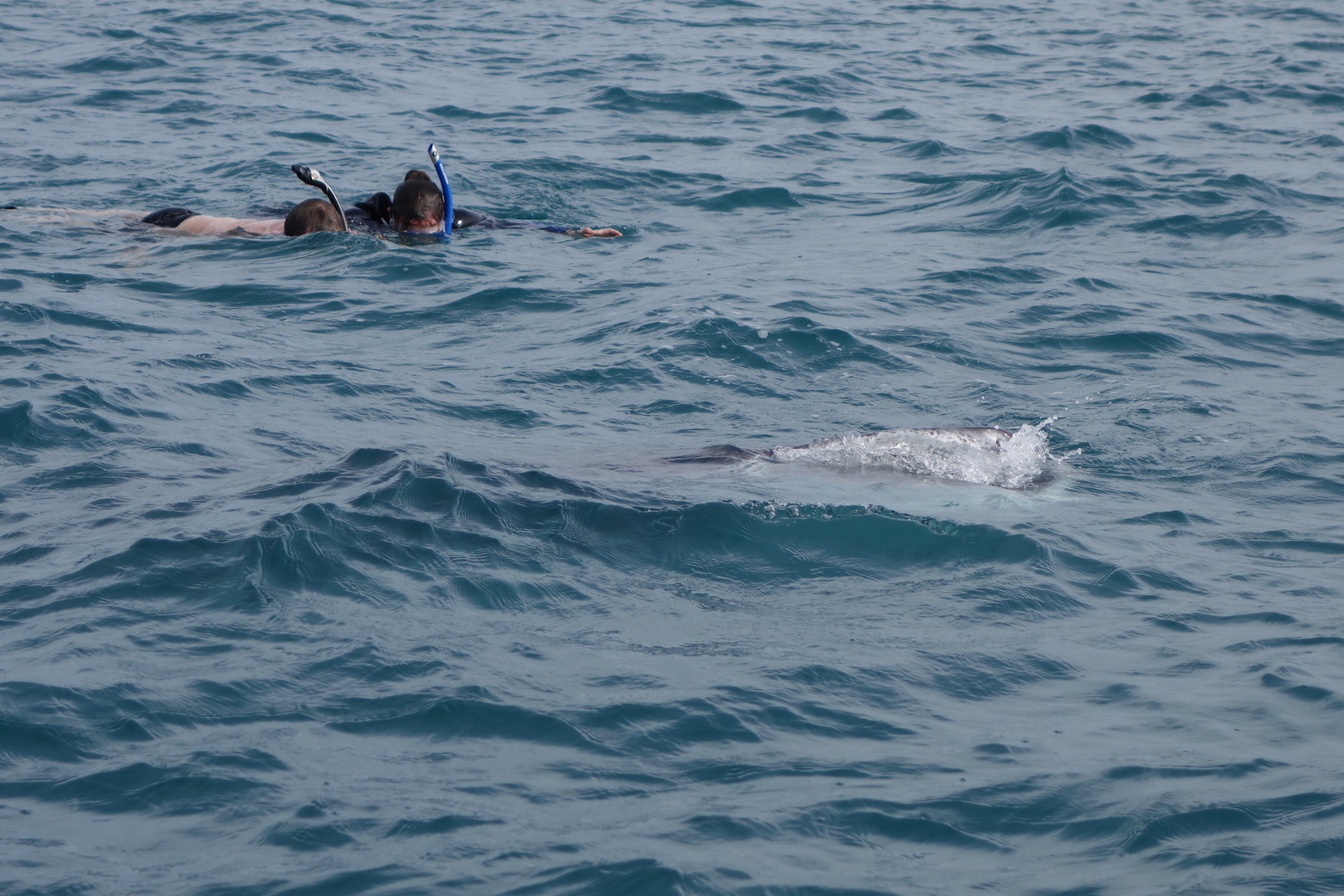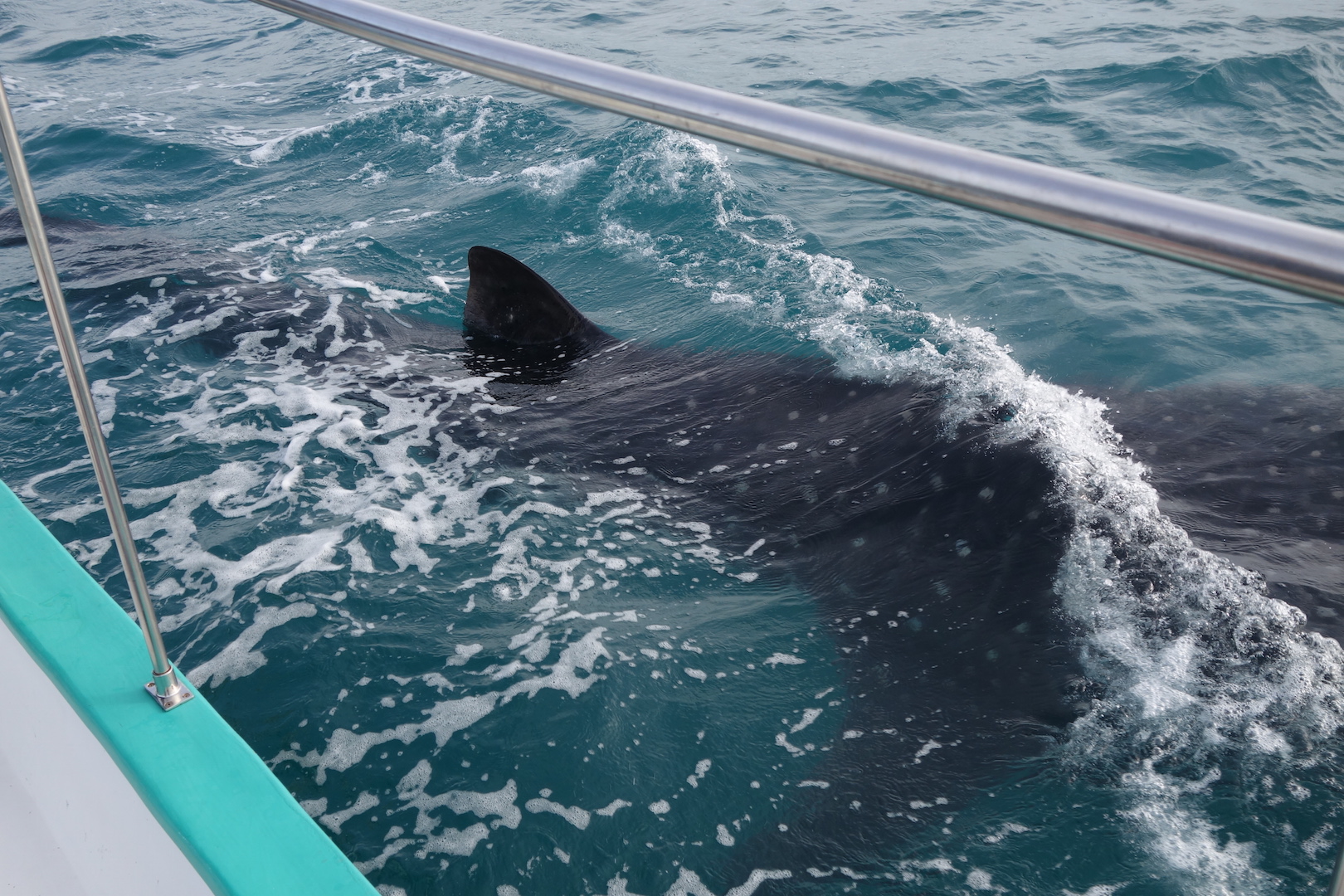0041: Mexican Seafood
The desert is not quite how I imagined it.
Images of intensely dry heat, sand dunes and camels and scenes from Lawrence of Arabia spring to mind.
It’s a lot more diverse. There are many more landscapes than I anticipated seeing.
Travelling down from the north at Tijuana, the road followed the coastline quite a lot and naturally, there were a lot of seascapes, cliff faces, Sand dunes and low growing grasses and shrubs.
Further south, The terrain became a little bit more mountainous. And jagged rock faces and boulders appeared in between forests of cactus and other desert plants. The terrain would change almost every 20 kilometres. It’s quite remarkable how the rocks and mountains would change their colour, texture and their form. I’m certainly no geologist but I understand some of the differences between various types of rocks and how they may have been informed in the ancient past. In the centre of the peninsula, you begin to see Volcanoes or at least the remnants of them.
The west coast of the Americas is part of the tectonic phenomenon, the ring of fire that circles the entire Pacific Ocean.
The rocks in these central volcanic regions changed again becoming small, rounded or sharp edged and glassy. All multi-coloured and the type that you would expect to see being spat out of a volcano on a nature documentary program.
In places there is evidence of lava flows in the recent past. Gullies and river washouts slice through hills showing layer upon layer of volcanic ash built up over the millennia.
The Saguaro cactus dominates as the biggest plant along the whole peninsula and there are very few real trees. Mesquite bushes in the north and a few rogue fruit trees and surprisingly Date palms in the southern regions.
Large bushes only reach about 3 metres tall before wind heat and limited of water begin to stunt their growth.
But there is water here. The Pacific ocean on one side and the sea of Cortez on the other supply some humidity. As I left Guerrero Negro, I spent most of the morning cycling through thick patchy fog.
But the parched soil and plants soak the moisture up quickly and the sun burns through again by 11 am bringing its intense heat.
The Mexicans have invested a lot in agriculture here too. Pumps and drains bring aquifer water to the surface and over their fields and crops.
Wide rivers, dry now show recent destruction having carried rocks, uprooted Cacti, trees and destroyed roads to reach the sea.
In the central area near Chapalas, the road climbs high to around 850m above sea level.
It‘s not a difficult climb, more long and drawn out but at the high point the wind blows powerfully enough to knock you off your bike if not careful. The fine volcanic dust loosened further by agriculture flies through the air and stick to everything leaving a brown grey haze on me, my bike and equipment.
I have stopped trying to wipe it clean now as it is soon just as dusty a few kilometres further down the road. I just appreciate a shower more at the end of the day. And clean clothes when I get the chance.
Coyotes make their characteristic yelps and howls in the dark.
Much like the Wolves I heard in Alaska and Canada, but clearly these are lone animals marking their territory. You hear them but never see them, unless killed by vehicles.
Horses and Cows now number amongst the road kill. As do feral dogs and cats.
The heat soon drying the carcasses leaving shrivelled half rotten and chewed shapes ready for the vultures to finish them off. Soon I hope, as the smell is intense!
Strange hopping mice bounce across the road on all fours before quickly returning when they see me or the low flying eagles thst hunt them.
Chipmunks, like those in the forest north surprised me on the roadside too. Smaller than their northern cousins, but still just as noisy and rapid as they turn and run.
Lizards of all different sizes add to the scurrying multitude. Snakes too, but less here than in the swamps of Louisiana and Texas.
The newcomers are the deadly spiders. Beautiful, shiny black bodied and red marked, the Black widows bite is rare, painful and dangerous.
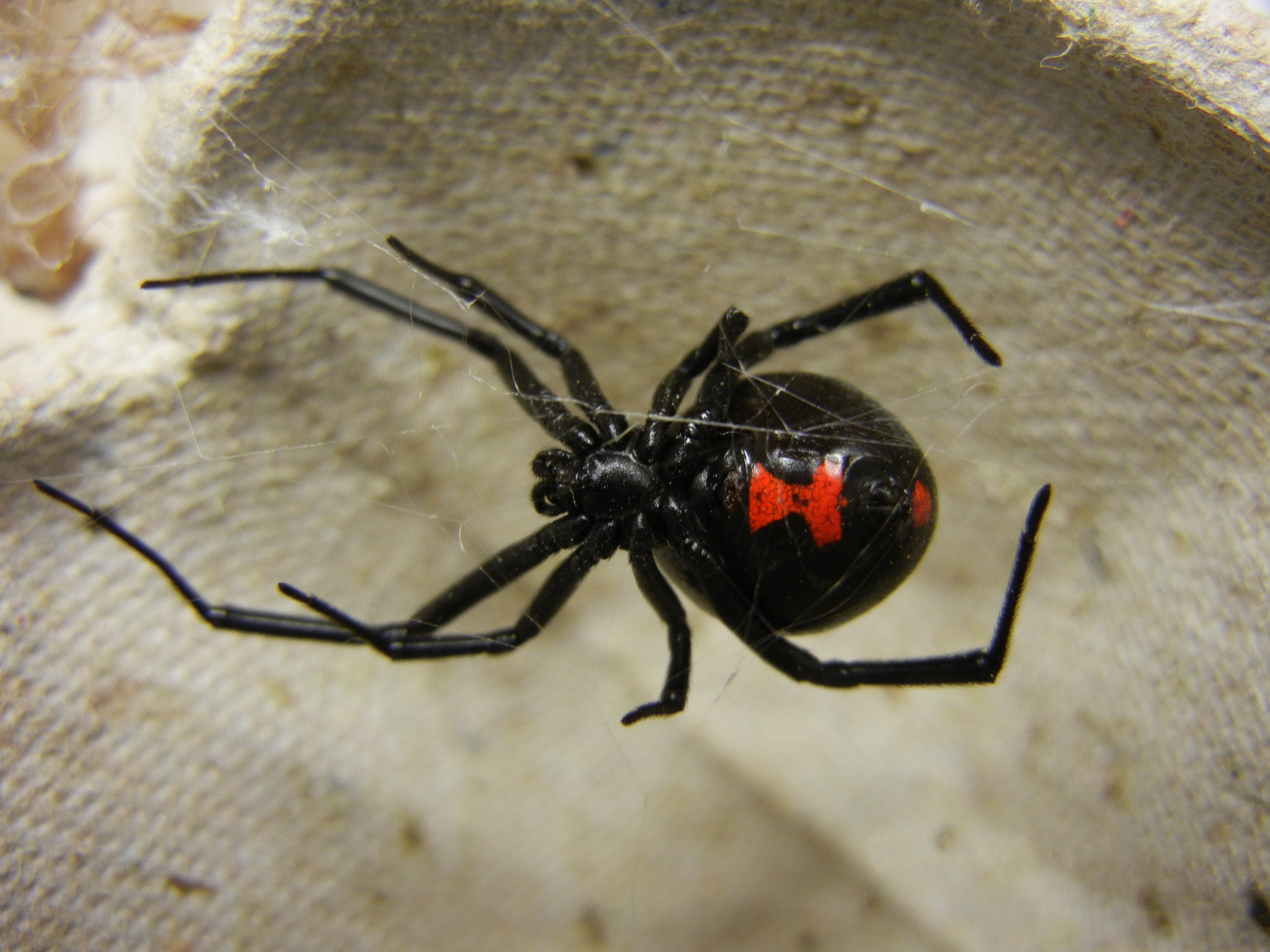
You have to check trees and bushes carefully before picking fruit or moving branches.
Tarantulas too, come out in the cool evening air. Huge, black and the size of your hand. They live in the grass on the roadside or in the cracks in the embankments on the roadside.
They like to find cool dark places in the day and are active at night. I have only seen 2 or 3 but that is enough.
Scorpions I have yet to see, but there are plenty here I'm told.
The road for the most part is very good. The Government is investing in upgrading as there is a huge amount of tourist traffic here and the associated utilities that come with it.
Despite the lack of shoulder for the most part, the truck drivers are generally the most respectful giving a little cyclist more space than is necessary. The local boys in their beaten up old pickups tend to slow, whistle, wave and cheer as they pass. Often too close, but fairly slowly for the most part. The worst drivers are a global phenomenon. The White van drivers! Delivering commercial produce at ridiculously high speed and often too close for comfort.
I'm am not sure anyone in the world needs potato chips delivering that quickly!
The other group are the holiday gringos in their brand new trucks, RV monsters or Baja beach buggies, who think they own the roads.
Probably also confusing the speed signs now in kilometres rather than miles per hour.
The police and military have regular checkpoints for contraband and agricultural inspections. They are generally polite and wave a happy cyclist through.
Despite the horror stories in the media from other parts of Mexico, the police in Baja have been polite and courteous and I have slept in or behind police buildings on several occasions with no hassle at all.
I passed through Santa Rosalia. It was the first big town on the eastern side and my first view of the sea of Cortez. Clearly an old fishing port, many of the old dockside buildings for fish processing are being pulled down or renovated. A huge copper nodule mine on the north side of town is the major employer now and the majority of the young men on the street wear the company motif on their clothes.
Mulegé was my next stop and I spent 2 nights with Couchsurfing host Bill.
An outspoken American and former communications engineer, he retired over 10 years ago to this sleepy little town on the MEX-1 road.
The town had suffered and seen a lot of damage from the last hurricane in September 2014. As the town follows the steep sided valley into the mountains, incredibly heavy flash flooding took river water up to over 10 metres in the space of a few hours.
Expensive, river front, Gringo homes were completely washed away.
The brand new river embankment destroyed. Power cables hanging, twisted metal shapes and equipment formerly someone's home or property mashed into unrecognisable forms.
The locals know to build high up the hillside, leaving the low ground for the Gringos who regard the riverside properties as a status symbol. Until a Hurricane comes and literally wipes the area clean.
Loreto is the first real tourist town I have seen. Clearly there is a lot of money here. Either from Gringos or some industry, I could not see. Regardless, it is a very pretty if expensive town and I spent a couple of days here.
Leaving the town heading south again, I came across several tourist beaches owned apparently by the Gringos. Despite the beautiful and peaceful locations, I didn't want to camp on the stunning beaches. Paying to be surrounded by RV's with their power generators drowning out the natural sounds and blocking natural beauty.
And there is something odd to me, about people who drive thousands of miles to such a pristine location to lock themselves inside a huge RV set up their satellite dish and watch TV.
While I watch satellites trace across the skies and the moon and planets follow the ecliptic line.
Crossing back over the mountains I camped in the garden of a hotel in Ciudad Insurgentes.
$100 pesos for a small private walled garden, hot shower, toilet and a view of the stars like no other.
I slept well after eating an enormous 'super burro' with beef and fresh vegetables.
The food here has been great. And I am certain I am putting on weight, despite cycling every day and high calorie output.
And it's all SO CHEAP!
I always try to have a good breakfast. $65 pesos get you a large plate of scrambled eggs, with something added.
I often have Chorizo sausage or Machaca.
A type of dried shredded beef.
If there is a fruit plate, I'll add that to the pile and of course, fresh orange juice too.
Especially now they are coming into season.
During the day, I don't eat as much as I should but often call into the 'Abbarotes' local stores to pick up water, Coca Cola or some biscuits to nibble on.
Then arriving in a town in the evening, I try to find a roadside taco stand for a meal. $20 pesos or less will get you a large taco, freshly prepared with salsa and vegetables.
Two or three of these usually does the job well and at the same time ask the locals about safe places to camp and the location of the police station, fire station or church.
La Paz is a huge city. A commercial hub and sea port so the traffic was a shock after the quieter road I have become accustomed to. I had arranged a week or so ago to stay two or three nights with a Warmshowers host, but despite his definite confirmation I did not get a reply when I asked for his address. And not having a phone number either I had to abandon this and booked into the backpacking hostel, camping in their yard.
The waterfront is very pretty with a lot of people walking, jogging or cycling in the evenings.
Festive bright lights and Christmas decorations made me realise how close it is, and where I will be?! I hadn't even thought about it.
I hope to spend time with a family, but I have no arrangements so I am hoping to get 'adopted' as I pass through a town somewhere.
Also camping at the hostel, I met Ina and Judith. Two German girls on holiday travelling around Mexico.
We explored the city for a while then later decided to go whale watching.
I was keen to see this and the price was reasonable, but I misunderstood their description.
It was in fact swimming with whale sharks!
I quickly changed into some shorts and we walked to the beach.
Bernardo the tour operator took us to our boat and 10 minutes later we were surrounded by the largest fish I have ever seen!
"Oh you are lucky, they are feeding!" said Miguel the boat captain.
A few minutes later and the girls jumped in and swam towards these intimidating, massive but placid animals.
I haven't been swimming in years and have never used a snorkel and mask before, so I very out of practice entered the water less than gracefully, sucked in a lungful of salty water then panicked as I couldnt float to reorganise myself.
Attempt no.2 and I was in more control.
Though tired cycling legs now kicking flippers and a heavy body wasnt helping much.
I swam towards the girls and a 6 metre shark, but I couldn't see anything despite its massive size.
The sea was quite choppy and visibility was poor. All I saw was the blue of the water and was trying to concentrate on not breathing in more water through the snorkel!
It wasn't working and I swallowed more ocean!
Third try with a different mask and snorkel. I got closer, but the animals moved away rapidly with a quick flick of their tails before I could see one up close up.
The girls more confident and adept at swimming in the choppy waters were following them and taking photos with their little waterproof camera.
Eventually I gave up and stood on the helm of the boat taking photos.
We were indeed lucky.
We were surrounded by at one point 6 of these massive beasts all passively sucking up the microscopic life that feeds them. The photos and videos certainly do not do justice to the memories I have in my head.
What an incredible experience!
I'm pleased I had the opportunity and despite my less than glamorous efforts at snorkelling I hope to do it again.
But I think I need more practice swimming first...
